An Extensive Look at the Entire Tudor Black Bay Lineage from 2012 to 2024
Breaking down the history of a modern, now emblematic dive watch that drastically changed the company's perception.
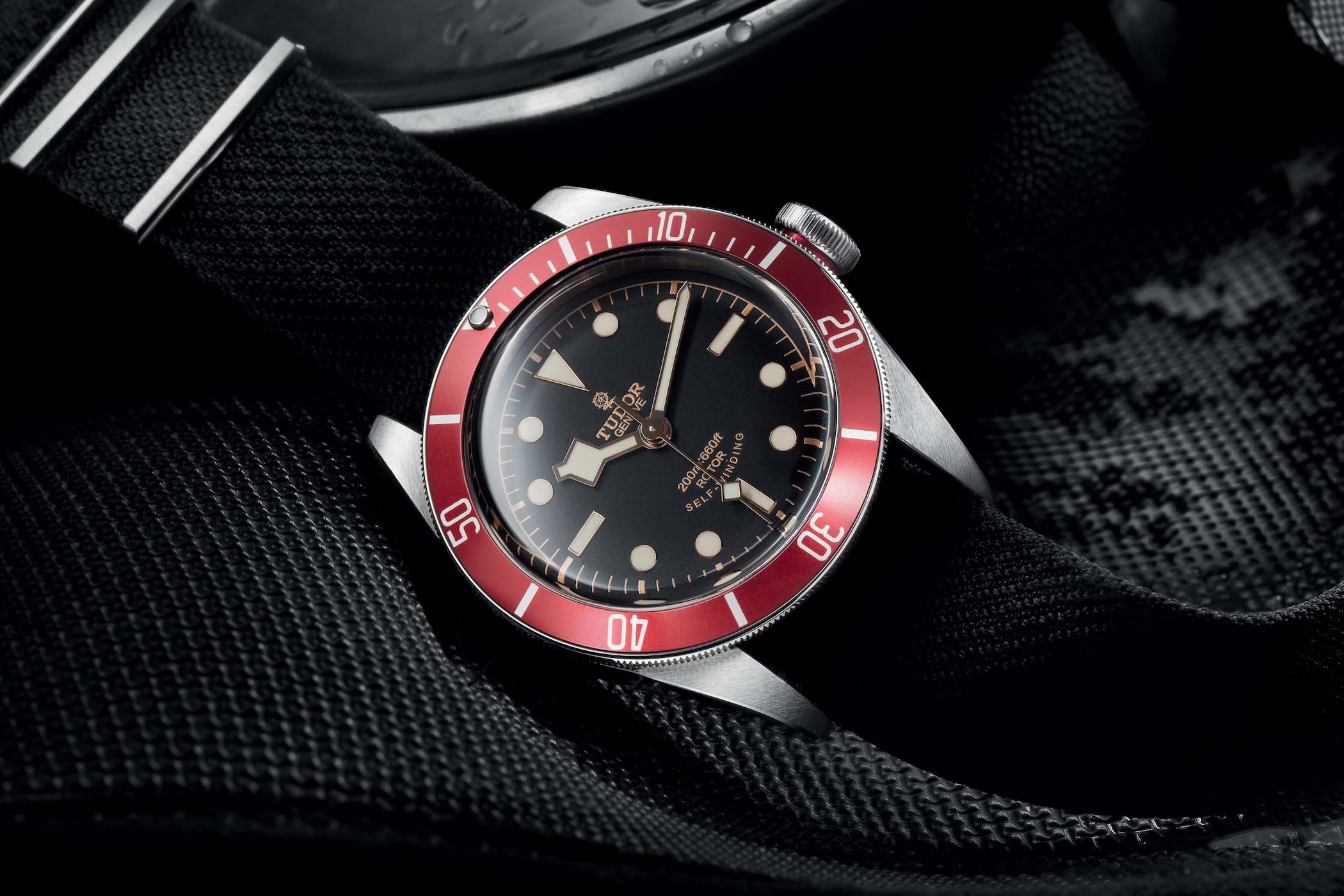
It is pretty impressive to see how Tudor’s Black Bay models have established themselves as more accessible options to the Rolex Submariner in a relatively short period of time without compromising on quality. But more than just being a more accessible Submariner, the Black Bay has gained its own status over the years, becoming an independent collection. The series also drastically helped redefine a brand that was struggling with an identity crisis at the time. Although only launched in 2012, there is now a sizable portfolio of Black Bay models, with the classic diving variants being the 41mm Black Bay, the 39mm Black Bay 58 and the 37mm Black Bay 54.
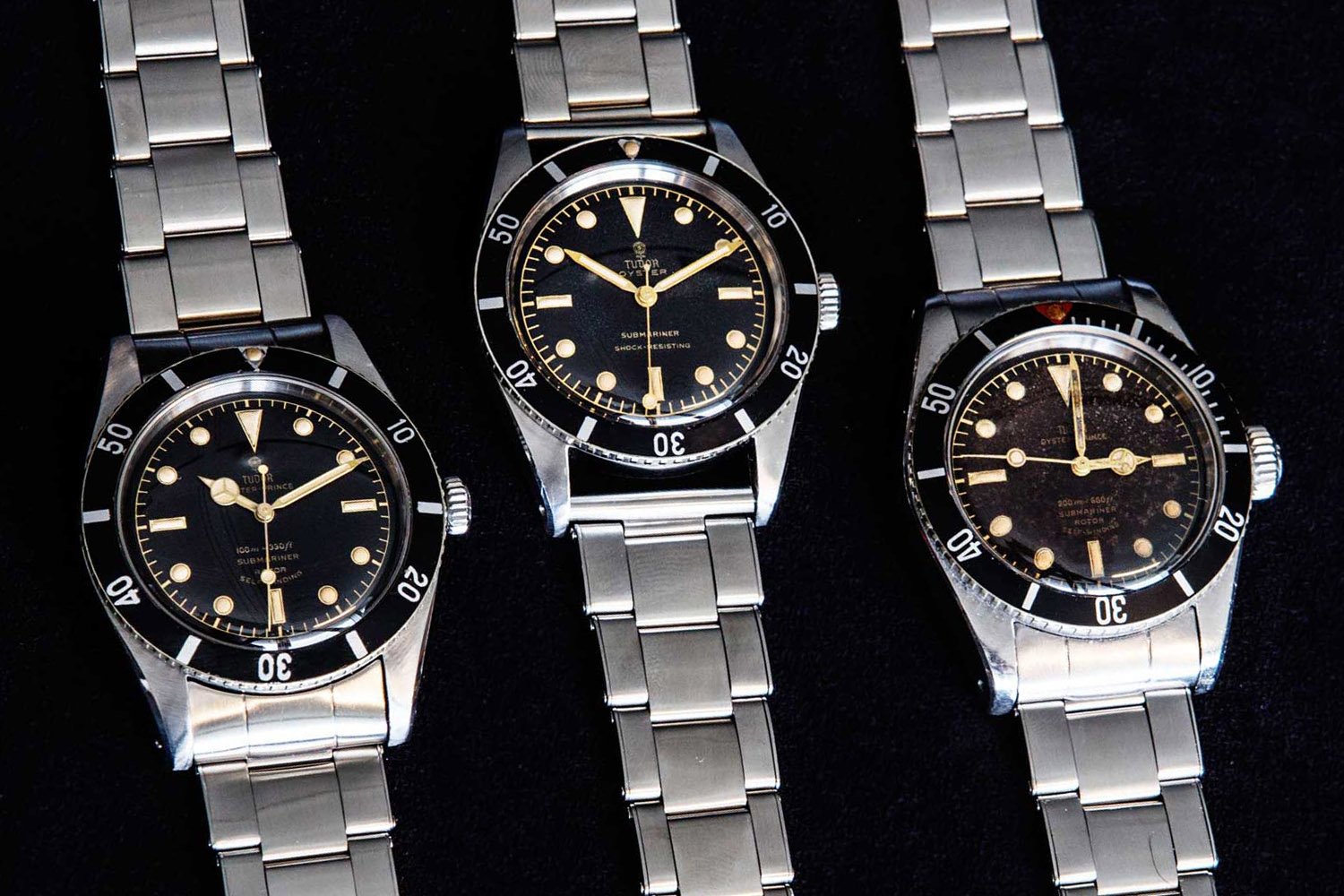
This group of three references belongs to Tudor’s Heritage line, which follows the 1954 Oyster Prince Submariner (ref. 7922) in overall design – you can check this in-depth article to understand the connection between vintage Tudor Submariner models and modern Black Bay watch. The roots of this modern incarnation go back to the decade that launched modern divers like the aforementioned Rolex Submariner. We’ll be breaking down the entire collection – and what a collection the Black Bay has become in just 12 years! As we’re looking at dive-oriented models, we have excluded the Black Bay Chrono, which is somehow a hybrid between a dive watch and a racing chronograph.
2012 – The introduction of the concept with the Burgundy Heritage Black Bay 79220R
The inaugural Heritage Black Bay diver was a bold watch at 41mm in diameter and nearly 15mm thick (14.8mm), especially in 2012. That being said, it wasn’t overly cumbersome and was a hit from the get-go. It was so successful, in fact, that it won the Revival prize at the Grand Prix d’Horlogerie de Genève (GPHG). It also signalled Tudor’s return to the US market after almost a decade of absence, which, needless to say, was a very big deal. The Black Bay had classic looks with modern durability and came with a price that undercut comparable pieces from Rolex, Blancpain and others. Looking back at Tudor’s original ref. 7922 dive watch from 1954, which launched just one year after the Rolex Submariner, we can clearly see where the Black Bay inspiration originated. However, additional models would contribute to the 2012 diver’s aesthetic, including ref. 7924 from 1958 that doubled water-resistance to 200 metres and ref. 7016 from 1969 that introduced the now iconic snowflake hands.
The original Tudor Oyster Prince Submariner had Mercedes hands like its sister brand, Rolex, but the Black Bay debut in 2012 (ref. 79220R) featured Tudor’s signature snowflake hands with the oversized squarish hour hand. Rolex founder Hans Wilsdorf established Tudor as Rolex’s subsidiary in 1946, and it was the Black Bay over six decades later that helped separate it as its own independent brand in the eyes of consumers. The first Black Bay had a classic gilt dial with applied indices and Super-LumiNova, which was nothing out of the ordinary at the time. But it also featured a burgundy aluminium rotating bezel insert, which definitely strayed from the norm. Inside the inverted triangle at 12 o’clock was a luminous “pearl” that would be present in all subsequent bezels. A thin, colour-matching tube (matching the bezel) also sat between the case and crown. As mentioned, it was three vintage Tudor divers that shaped the Black Bay series – ref. 7922 with the original diver aesthetic, ref. 7924 with 200 metres of water-resistance and ref. 7016 with snowflake hands. It was an unusual approach, as a single watch usually inspires a heritage piece instead of a culmination of three.
The dial had a “smiley face” printing above 6 o’clock with “SELF-WINDING” curved upwards, which originated on the aforementioned vintage models. This would change to a more conventional style on dials after 2015. There was also a domed or box-shaped sapphire crystal that mimicked early acrylic counterparts.
Snowflake Hands
Rolex is well known for its Mercedes hands, and the original Tudor divers incorporated them, but that changed in 1969 with the snowflake hands on the ref. 7016. It wasn’t simply a design exercise, but a necessity as the French Navy (Marine Nationale), a main customer for Tudor’s Submariners (not to be confused with the Rolex counterpart) needed maximum legibility underwater. Two significantly different hands, an elongated baton minutes hand and an oversized, squarish hour hand, fit the bill and satisfied the Marine Nationale’s requirements. This setup has come to define Tudor’s Black Bay divers as much as Rolex’s Mercedes hands, and they’ve taken their place alongside the industry’s best hands like Breguet, Broad Arrow, Dauphine, Cathedral and (of course) Mercedes.
2014 – The Blue Edition 79220B
In 2014, Tudor introduced a new Black Bay model, which marked a simple change of colours. The original matte black dial remained but now had silver/white applied indices and hands, while the rotating bezel insert became navy blue. All models thus far were stainless steel with oversized screw-down crowns (introduced in 1958) and had mixed geometrical indices (circles with rectangles at 3, 6 and 9 o’clock, and an inverted triangle at 12 o’clock). The crown was oversized and unguarded, similar to original Rolex Submariners (like ref. 5510), but was fairly flat and secure. Tudor’s rose logo was printed under 12 o’clock, which was also seen on original 1950s models and remained on Black Bay dials until 2016, making these early “rose” Black Bay models a bit collectable today.
2015 – The Black Bezel and Red Triangle 79220N
The third Black Bay model appeared in 2015 with a black bezel and a new red triangle at 12 o’clock. This was the “monochrome” model before the actual monochrome model (more on that later…) and was a blend of the original 2012 Black Bay and the ref. 7923/001 with a black bezel and red triangle that was made for Only Watch 2015. Unlike the Only Watch piece, however, this bezel had a standard 15-minute scale. All three Black Bay watches thus far had lollipop seconds hands with a square aperture, which would change in subsequent models. This specific Black Bay 79220N, with a black bezel and smiley dial, is one of the rarest of the whole collection, with a production period of around six months. It has thus become slightly collectable.
Classic Automatic ETA 2824, from 2012 to 2015
The first models used the ETA 2824 automatic workhorse, easily identifiable by the rose logo and smiley Self-Winding on the dial. Tudor had a long relationship with ETA and there was an era when they used Rolex Oyster cases with ETA movements. The 2824 was proven and reliable with a beat rate of 28,800vph (4Hz), but nothing particularly special with high production numbers and an outdated 38-hour power reserve. This helped keep prices accessible for a very well-put-together dive watch, but it was time for calibres to move up in specs. The first manufacture automatic calibre debuted in 2015 for Tudor’s North Flag model (not related to Black Bay), but the diver was upgraded a year later.
2016 – The Move to Manufacture Movements
Tudor introduced the manufacture calibre MT5602 (MT stands for Manufacture Tudor) for the Black Bay 79230 series in 2016, and all models now incorporate variants of this movement over the ETA 2824. Designed in partnership with Kenissi (a movement maker partially owned by Tudor), it retained the ETA’s beat rate of 28,800vph, but the power reserve almost doubled to 70 hours. The balance spring was now anti-magnetic silicon and all were COSC-certified.
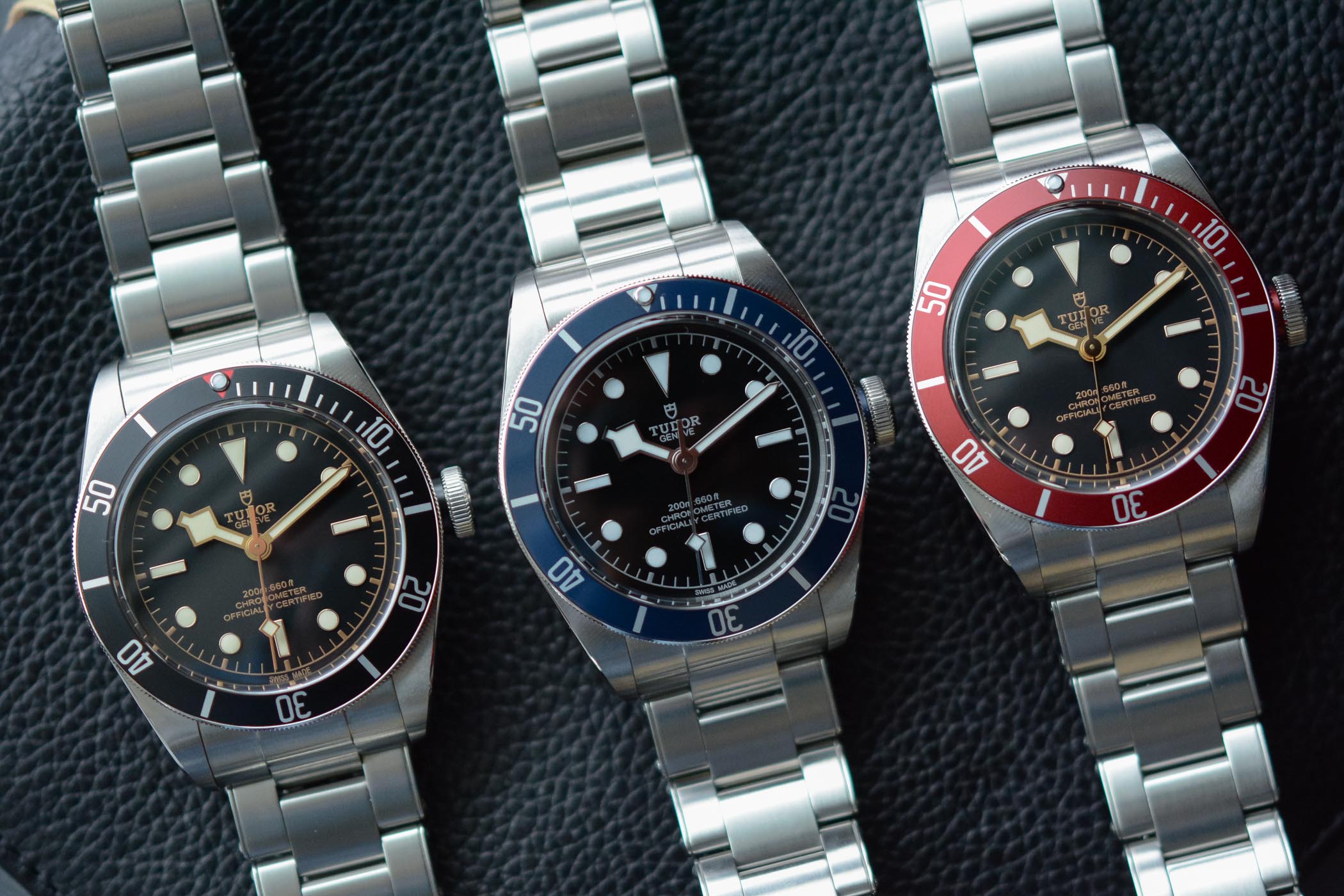
Other improvements included a variable inertia balance wheel for improved precision and a transversal bridge over the balance for better shock resistance. A variant of this, calibre MT5601, was made for the Black Bay Bronze in 2016 and simply had a larger diameter of 33.8mm for the larger 43mm bronze case.
2016 – The 43mm Black Bay Bronze 79250BM
This bronze variant stands out for several reasons. First and foremost, it was bronze instead of stainless steel with a finish that would show inevitable patina over time. It was also larger at 43mm over 41mm and featured Arabic numerals at 3, 6 and 9 o’clock over rectangular indices. The aluminium bezel insert was brown to complement the bronze case, and the dial was matte chocolate brown. The bronze was a special alloy of bronze and aluminium, giving it a subdued colour that was almost a warm grey mixed with a golden hue. Not your typical bright, goldish bronze sheen. The caseback was steel with a matching PVD coating to avoid potential allergic reactions.
The dial of the Black Bay Bronze had the familiar snowflake hands and applied indices with the aforementioned exception of Arabic numerals. 2016 also marked the year that the rose logo was replaced with a shield counterpart, but the rose remained on the crown. The curved printing or “smile” above 6 o’clock also changed to a conventional straight print with “Chronometer” and “Officially Certified” on two separate lines. Above that was the depth rating of 200 metres. This remains the biggest Black Bay at 43mm and the only one with Arabic numerals, so it’s indeed an anomaly. Although larger than the norm, it wore fairly well on a NATO strap, as a bulkier bronze bracelet wasn’t available. A leather strap was also an option. As mentioned, it housed the modified manfuacture calibre MT5601, which was a slightly larger variant of the calibre MT5602. This same watch was also available as part of the Bucherer BLUE collection, with a blue dial and a blue bezel.
2018 – The Black Bay GMT Pepsi 79830RB
A Rolex GMT-Master(ish) Black Bay GMT model with a rotating 24-hour Pepsi bezel debuted in 2018 with a black dial, GMT hand that shared the square tip with the seconds hand and a date window at 3 o’clock. The general Black Bay formula was otherwise intact, including the diameter, water-resistance, indices and snowflake hands, but the ability to track multiple time zones and a date complication injected new functionality into the series.
Powering the watch was the new COSC-certified calibre MT5652 with a variable inertia balance wheel, silicon hairspring and 70-hour power reserve. It was a true or traveller’s GMT movement with an independently set local hour hand, bringing a more accessible GMT option to those wary of the Rolex GMT-Master II price.
Today, the Black Bay GMT comes in several flavours, including a white dial Pepsi variant and Root Beer aesthetic with a black dial, black and brown bezel and optional two-tone steel/gold (capped) bracelet. Multiple strap options are also available for all models.
2021 – Introducing Master Chronometer Certification on the Black Bay Ceramic
One of the most unusual models, the Black Bay Ceramic, hit the scene in 2021. It was quite literally an all-black model with a monobloc ceramic case, black PVD bezel and crown and blacked-out movement (via a rare-for-Tudor exhibition caseback). The bezel simply had engravings of the diving scale, keeping it stealthy yet a bit difficult to read. The domed black dial was the conventional bit with the typical silver snowflake hands and indices filled with white Super-LumiNova for excellent legibility. A blue dial variant, ref. 79210CNU, was originally designed for Red Bull’s second Formula One team but became available in early 2024 for all buyers.
Inside was the calibre MT5602-1U automatic, a manufacture movement that brought Tudor into the elite field of precision timekeeping. Like all Black Bay models following the ETA era, it was COSC-certified but also carried the METAS certification to become a Master Chronometer. METAS focuses on precision, resistance to magnetic fields (to 15,000 gauss), water-resistance and power reserve, and accuracy standards that are stricter than those of COSC alone. Nothing more than a five-second range of variance is allowed per day (0/+5 seconds vs. -4/+6 seconds with COSC) and the power reserve must match the manufacturer’s claim. To be considered for METAS certification, all watches must first be Swiss-made and COSC-certified. To achieve this, Tudor and its partner Kenissi developed a new testing facility within the manufacture, according to METAS criteria and under its supervision.
2023 – The Second Major Update, the Black Bay Burgundy goes METAS
In 2023, the standard model with a burgundy bezel (a classic since 2012) was updated for the second time with the METAS Master Chronometer calibre MT5602-U and incremental design tweaks. This signalled an expansion of Master Chronometers in Black Bay models and a new exterior design. The difference between the calibre MT5602-U here and the earlier calibre MT5602-1U Master Chronometer on the 2021 ceramic model had to do with design, the latter being blacked out for the black ceramic case and exhibition caseback. The case diameter remained at 41mm, but the thickness dropped from 14.8mm to 13.6mm, which helped solve a frequent complaint.
The casebands consequently became thinner, and the caseback got a more domed, “bubble” style. The fluting on the crown was also tweaked, and it sat closer to the case as the coloured tube was removed. Dial text above 6 o’clock went to two lines, and the dial itself went from matte black to a slight sunray brushed finish. The lollipop seconds hand went from square to round, while the minute hand went from a baton aesthetic to pencil style, all slightly altering the classic snowflake design. A new Jubilee-style bracelet was also introduced.
2024 – The Black Bay Monochrome
A most recent addition is the traditionally styled Monochrome model with a black dial and bezel and only silver/white accents throughout (no gilt on this one like ref. 79220N from 2015). The bezel’s red triangle was also removed to keep this genuinely monochromatic and not unlike typical dive models from other brands, including Rolex’s Submariner. It comes with three options: Oyster or the new Jubilee-style bracelet or a rubber strap, and it houses the calibre MT5602-U Master Chronometer introduced with the 2023 Black Bay Burgundy model. And a quick note – the Oyster bracelets have a faux rivet aesthetic that really complements the old-school vibe.
Everything Else
The above covers the core models and history of the series, but there are additional models available, including a special Harrods collaboration (British luxury department store) with a green bezel insert. A two-tone steel-and-gold Black Bay is also available with an optional two-tone Oyster-style bracelet, although only the first centre links at the case are solid yellow gold as the rest are gold-capped. The Black Bay Steel introduced a steel bezel and date window at 3 o’clock in 2017. Not all models have gone for a Master Chronometer calibre, although the movements are otherwise very similar. For example, the calibre MT5602-U Master Chronometer is simply a higher tested/adjusted version of the COSC-certified calibre MT5602 and is visually differentiated by MASTER CHRONOMETER engraved on the outer edge of the back plate.
2018 – Going Smaller with the Black Bay 58
Tudor introduced a new Black Bay series with the Black Bay Fifty-Eight (or BB58) in 2018, which kept the overall design and bezel but shrank it into a 39mm package with a new movement to boot. The inaugural model (ref. 79030N) had the classic black bezel insert with red triangle and now gold markings (the 41mm black bezel had silver markings) and the familiar gilt dial. The case adopted the size of vintage dive models, making it more of an authentic heritage piece, although ref. 7924 was even smaller at 37mm (more to come with that below). The Black Bay 58 was based on the Oyster Prince diver (ref. 7924) with a 200-metre water-resistance rating from 1958 (hence the name), but like the 41mm Black Bay series, it took inspiration from other models as well, like ref. 7016 with snowflake hands from 1969. In essence, the Fifty-Eight is a smaller version of the 41mm Black Bay diver, but the changes add up to a very different experience on the wrist. A quick note – the tube between the case and crown was now silver to match the case, not the bezel colour.
Unlike the newer 41mm Black Bay models, the BB58 returned to the square lollipop seconds hand on all but the latest GMT models. There are also a few more variants compared to the original Black Bay divers, particularly with the introduction of precious metals for the case. Only bronze made it to 41mm Black Bay cases over stainless steel.
Powering the Fifty-Eight was a new manufacture COSC-certified automatic movement, the calibre MT5402 – a smaller version of the 41mm Black Bay calibre MT5602 with a silicon hairspring and 70-hour power reserve. It’s thinner as well (4.99mm vs. 6.5mm), allowing the Fifty-Eight case to slim down to 11.9mm compared to 13.6mm. This is the core engine of the Fifty-Eight series, but other calibres exist for either a GMT function or aesthetics with an exhibition caseback, and only the latest GMT models are Master Chronometers with calibre MT5450-U.
2020 – The Black Bay 58 Blue
It was inevitable that a blue model would join the collection, and that’s exactly what happened in 2020 with a blue bezel and dial, differing from the 41mm Black Bay (ref. 79220B) from 2014 that just got a blue bezel and silver elements on the black dial (replacing gilt). A 43mm special Bucherer bronze version from 2017 (ref. M79250BB-0001) had a blue dial as well with gold indices/hands, but it wasn’t a standard model. Dial elements on ref. M79030B were silver with white Super-LumiNova and bezel markings were silver as well, and there was no red triangle. The dimensions, water-resistance and calibre remained the same.
2021 – The Bronze Black Bay 58 Boutique Edition
Unlike the 43mm Black Bay Bronze from 2016 (ref. 79250BM), the Black Bay 58 Bronze variant included an Oyster-style riveted bronze bracelet. It wasn’t a limited edition but a “boutique-only” model that naturally limited accessibility. Regardless, it was an unprecedented model as no other Black Bay had a bronze bracelet (and it’s very rare in the industry), but everything else was familiar. A couple of things to note were a fully brushed finish (no polished caseband or lateral bevels) and stainless steel caseback with a matching PVD coating. Unlike the Heritage Bronze model, dimensions were unchanged compared to the Fifty-Eight steel counterparts, and the weight difference was nominal. The movement was slightly tweaked for an exhibition caseback with calibre MT5400, which was just a bit larger than the MT5402, for a better appearance through a sapphire window. It was a moot point, however, as the caseback here was solid, and it was ultimately designed for the 2021 silver and gold models (below).
The matte brown dial seemed identical to the 2016 bronze model at first glance, but there were subtle differences in hue and darkness, as well as a dégradé effect with the centre lighter than the outer edge. The aluminium brown bezel insert was the same or very similar to the 2016 model’s hue, so other than subtleties, this was a smaller variant of the 43mm Black Bay Bronze, but again with a full bronze bracelet. And that last part really is a big deal. The bracelet also introduced the T-Fit clasp with a tool-free adjustment system that offered 5mm of extension.
2021 – The Black Bay 58 in 925 Silver
Another first for Tudor’s Black Bay series, limited to the Black Bay 58, was the use of precious metals, either 925 silver or 18k yellow gold. The 925 silver model (ref. M79010SG-0001) used a historical material that was common over a century ago for pocket watches but is rarely seen today for wristwatch cases. Stainless steel, titanium, bronze and ceramic are now the preferred case materials, with gold or platinum being the common luxurious alternatives. Of course, other materials are out there, but the above covers the mainstream. 925 sterling silver is 92.5% silver (hence the name) and typically 7.5% copper, which is now generally limited to dial-making as it’s a softer metal and prone to tarnishing. However, Tudor’s 925 silver alloy has a special blend of aluminium that should (help) prevent tarnish and not be the fussy metal that legacy silver is known for. A bit of tarnish is most likely inevitable, but relatively easy to remove.
Like the bronze model, the case of the Black Bay 58 Silver 925 is entirely brushed and has more brilliance and lustre than stainless steel. Subtle to the layman but definitely tangible. However, that brilliance will change over time in the same vein as bronze, but probably not as drastic as it just takes on a duller sheen. Silver is also softer than stainless steel, so scratches and even small nicks are unfortunately inevitable.
Both the dial and bezel insert are a complementing warmish grey that Tudor calls taupe. It provides a monochromatic aesthetic with a lighter tone. The caseback has a rare sapphire exhibition window, so the slightly larger calibre MT5400 is carried over from the bronze model for aesthetics. There’s no 925 silver bracelet option for this one, but the gold model below offers a matching (and very expensive) gold bracelet.
2021 – The high-end Black Bay 58 in 18k Gold
The gold Black Bay 58 is predictably the most expensive and exclusive model of the collection, with a solid 18k yellow gold case. Like the 925 silver model, it has a brushed finish that almost resembles a bronze case before patina (to a layman observer, that is). It forgoes the classic black gilt dial and opts for a green version with a matching green bezel insert and gold diver’s scale. The snowflake hands and indices are also 18k gold with a cream Super-LumiNova. Like the silver model, it houses the slightly larger calibre MT5400 for the exhibition caseback.
As mentioned, unlike the silver piece, there is a gold bracelet available with a leather and fabric NATO strap that comes standard (both have 18k gold buckles). The bracelet predictably adds a huge amount to the price, putting it into high-end luxury territory at over USD 32,000, while the gold case with leather/fabric straps is still very high for Tudor at USD 18,000. It’s undoubtedly a niche model, but one that a select few will definitely appreciate.
2024 – The Long-Awaited Black Bay 58 GMT
One of the latest releases is a Black Bay 58 GMT model, following the 41mm Black Bay GMT from 2018. This is the only BB58 model to date equipped with a Master Chronometer automatic. It doesn’t come with the Pepsi look, but a more subdued black and red day/night rotating 24-hour bezel – a bit of a Coke style, but less saturated. The case is a bit thicker at 12.8mm from 11.9mm, but it’s much thinner than the 41mm Black Bay GMT at 15mm. It sports a traditional black gilt dial with Master Chronometer printed under GMT above 6 o’clock, confirming its superpowers. It has a date at 3 o’clock like the 2018 GMT model, but the seconds hand has a round lumed tip, while the GMT hand maintains the familiar square end (both were square on the 41mm GMT debut). The crown also sits flush with the case (no tube), but it otherwise has the familiar Black Bay 58 aesthetic of recent models.
Powering the BB58 GMT is the METAS-certified calibre MT5450-U, again making this the only Fifty-Eight Master Chronometer. This will undoubtedly change in the future, but it’s the lone wolf for now. Like the larger 2018 GMT model, this is a traveller’s GMT where the local hour hand is set independently in one-hour increments. The power reserve fell slightly from 70 to 65 hours with the added functionality, but it’s a small price for such an upgrade.
There’s currently only one colour combination, as described above, on either an Oyster-style bracelet or a black rubber strap. The 41mm GMT offers multiple dial and bezel colours, so the Fifty-Eight counterpart may expand in the future.
2022 – The Black Bay Pro GMT or the adventurer
Something a lone wolf in the collection and a watch with less of a diver’s intention, the Black Bay Pro is somehow the brand’s counterpart to the Explorer II. It even comes with an overall design that’s inspired by early models of this watch (in particular, the ref. 1655). At launch, some expected it to be the BB58 GMT all were waiting for, but even if it shared the same 39mm diameter as the Fifty-Eight references, it wasn’t meant to be part of this group of smaller, slimmer models.
The Black Bay Pro is a more robust, more adventurous model that combines diving capabilities with exploration features, mainly the GMT function that’s meant to be used to track day and night (but of course, it can be used as a traditional traveller’s function). While the look of the BB Pro was appealing, with its brushed 24-hour steel bezel, its blocky luminous hour markers, its yellow GMT hand and an overall instrument-like feeling, the main complaint came from the thickness of the watch, at 14.6mm – enthusiasts will have to wait for the 2024 Black Bay 58 GMT to finally enjoy a thinner traveller’s watch.
The Black Bay Pro GMT is a more rugged option, visually speaking, yet it retains most of the collection’s specs, including 200m water-resistance and the calibre MT5652, shared with the larger Black Bay GMT. It is available on a riveted steel bracelet with T-fit micro-adjustment, on a hybrid rubber and fabric strap or a black fabric strap with a yellow band.
2023 – Going Even Smaller with the 37mm Black Bay 54
Technically, the Black Bay 54 is the most faithful to the original 1950s Tudor divers with a 37mm case diameter. For modern consumers, however, it’s on the smaller side and strays from the BB58’s seemingly goldilocks 39mm. For smaller wrists or absolute purists, it’s a great option and thinner at only 11.2mm (the Black Bay 58 is 11.9mm). And once on the wrist, it wears surprisingly well. The Black Bay 54 is the youngest brother of the group, and only one model is currently available, ref. 79000N. That will likely change if it follows the Black Bay 58 in popularity.
Unlike the original BB58 with a gilt dial and gold scale on the bezel, the gilt-dial BB54 goes with a silver bezel scale like the 41mm Black Bay with a black bezel from 2015. However, the Black Bay 54 doesn’t have the red triangle at 12 o’clock or a detailed 15-minute scale. The bezel is actually closer to the Black Bay One (ref. 7923/001) from Only Watch 2015, but that one did have the red triangle. Looking at vintage Tudor divers, however, it’s the most faithful without the 15-minute scale and 37mm diameter. Other than size and design tweaks, little has changed, as we still have 200 metres of water-resistance and snowflake hands. Following the newer Black Bay design language, the lollipop seconds hand has a round aperture, not a square.
Powering the Black Bay 54 is the same COSC-certified calibre MT5400 from Fifty-Eight models with exhibition casebacks. It’s a curious decision as those were slightly larger than the standard calibre MT5402, again to be displayed from a sapphire back. Regardless, it’s a well-proven manufacture movement (still done with Kenissi, like all BB watches) and will serve the Fifty-Four series well, and I can only assume additional models are inevitable.
The Black Bay 54 comes with either an Oyster-style bracelet or a black rubber strap (no Jubilee option yet). Of course, 20mm aftermarket straps will fit as well, along with the Fifty-Eight models. The 41mm Black Bay has a 22mm lug width, but the same otherwise applies to aftermarket straps.
Let’s Wrap It Up
The Tudor Black Bay divers are anything but a “poor man’s” Rolex Submariner, GMT-Master II or Explorer II, despite Tudor being the more affordable sister company. The models clearly stand on their own with manufacture COSC-certified movements and a handful of METAS Master Chronometers. This Heritage series looks back at Tudor divers from the 1950s, but given the gap in production, it doesn’t have the continuous history of the Rolex Submariner. That said, overall quality/finishing and the high standards of Tudor’s movements make the Black Bay series top divers at any price. They may not have the “coronet” at 12 o’clock, but they have everything else going for them, including price.
The Black Bay portfolio extends well beyond just divers, but the focus here was on modern interpretations of three vintage pieces from the 1950s and 1960s. There are Black Bay Chronos, cases without bezels and even a somewhat bizarre piece, the Black Bay P01 with a 12-hour rotating bezel, based on a 1960s prototype for the US Navy. It’s the three traditional divers, however, that really encapsulate the Black Bay’s popularity and quite literally breathed new life into a then-struggling brand. They’re not quite old enough to be proper collectables, although early 41mm models with the rose logo and ETA automatic are quickly getting there.
If you’re in the market for a modern, premium dive watch that won’t break the bank like a Rolex, Blancpain or even Omega Seamaster, Tudor’s Black Bay portfolio offers the best options for the price. And you have four sizes to choose from, assuming you’re considering the 43mm bronze variant. It really doesn’t get any better.

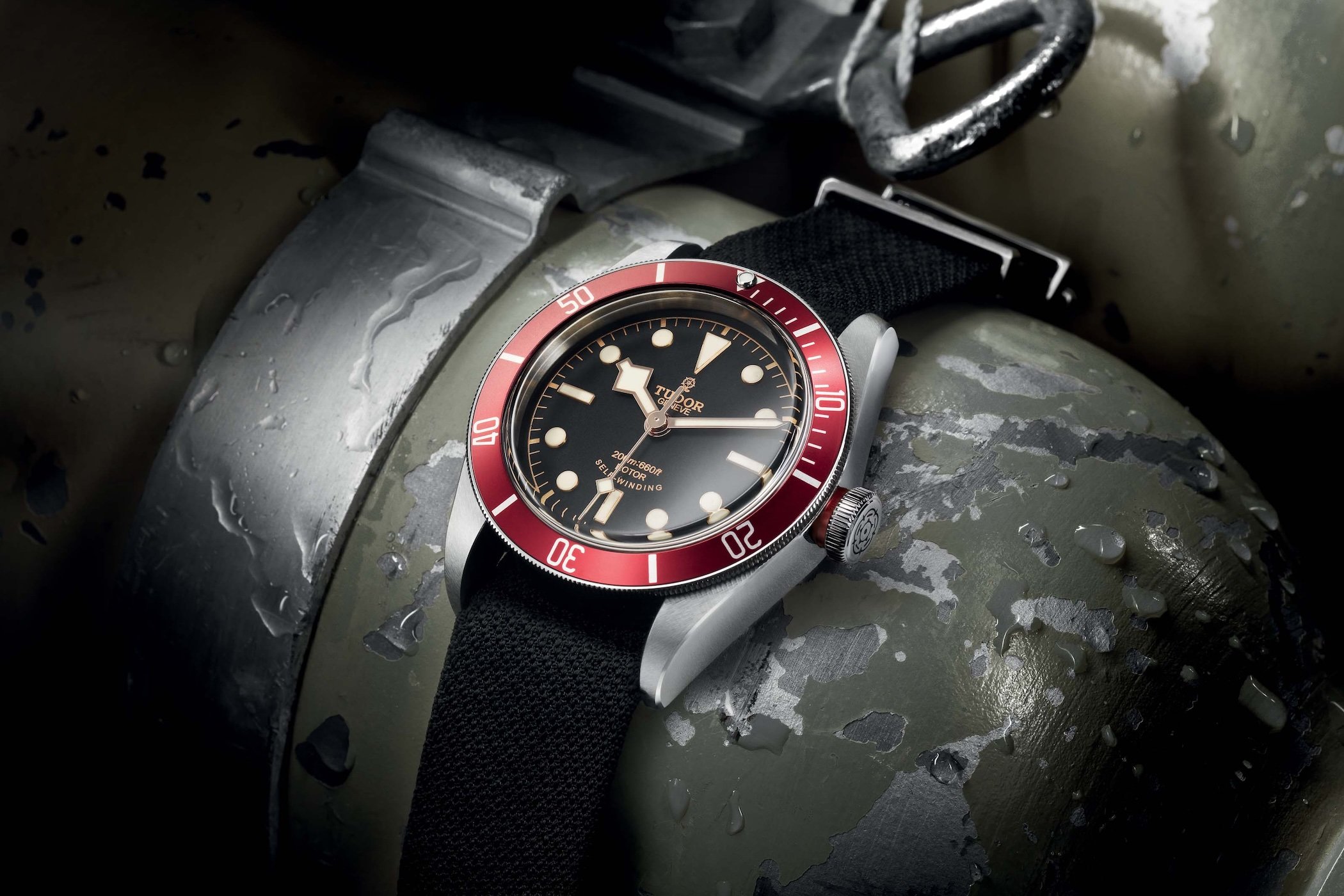


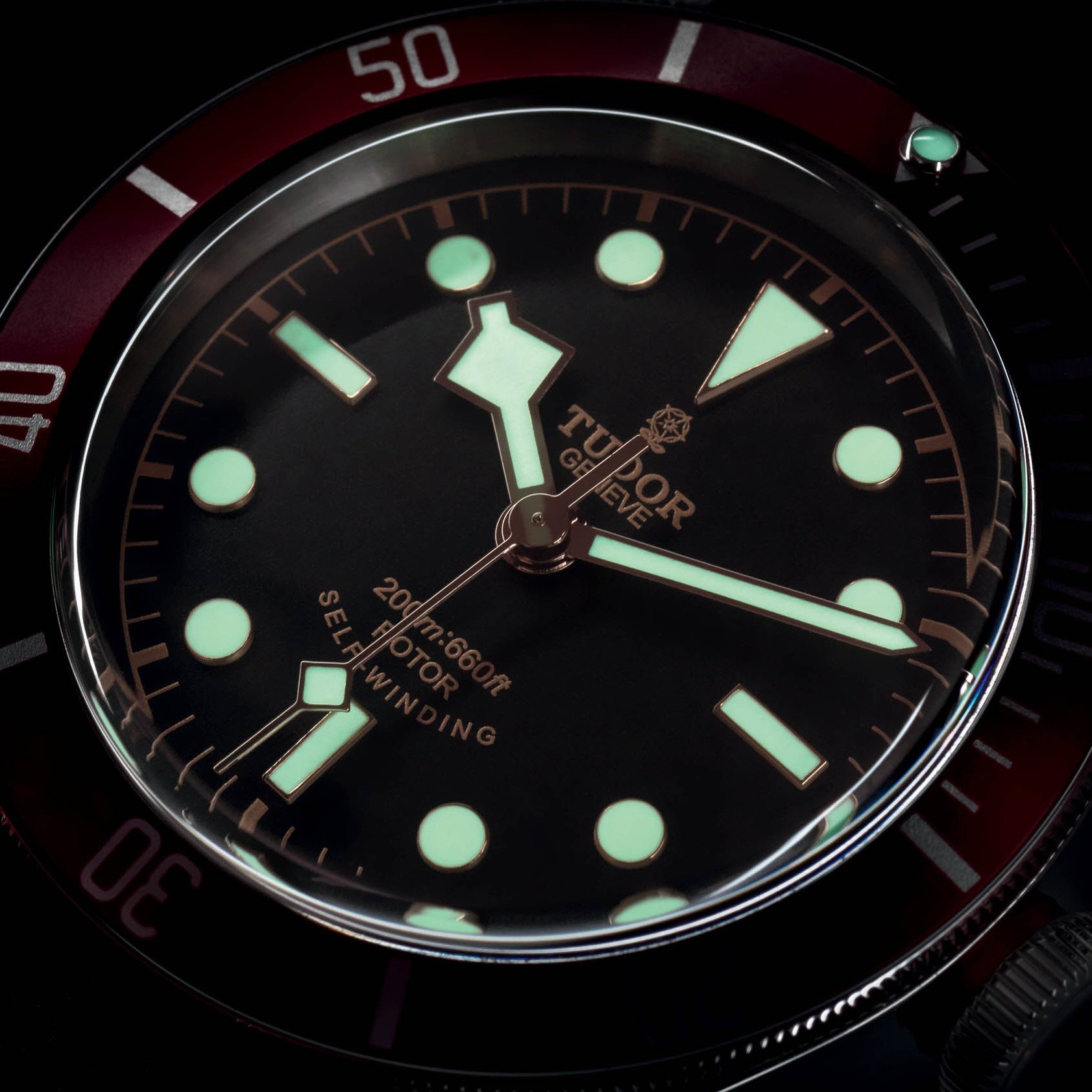


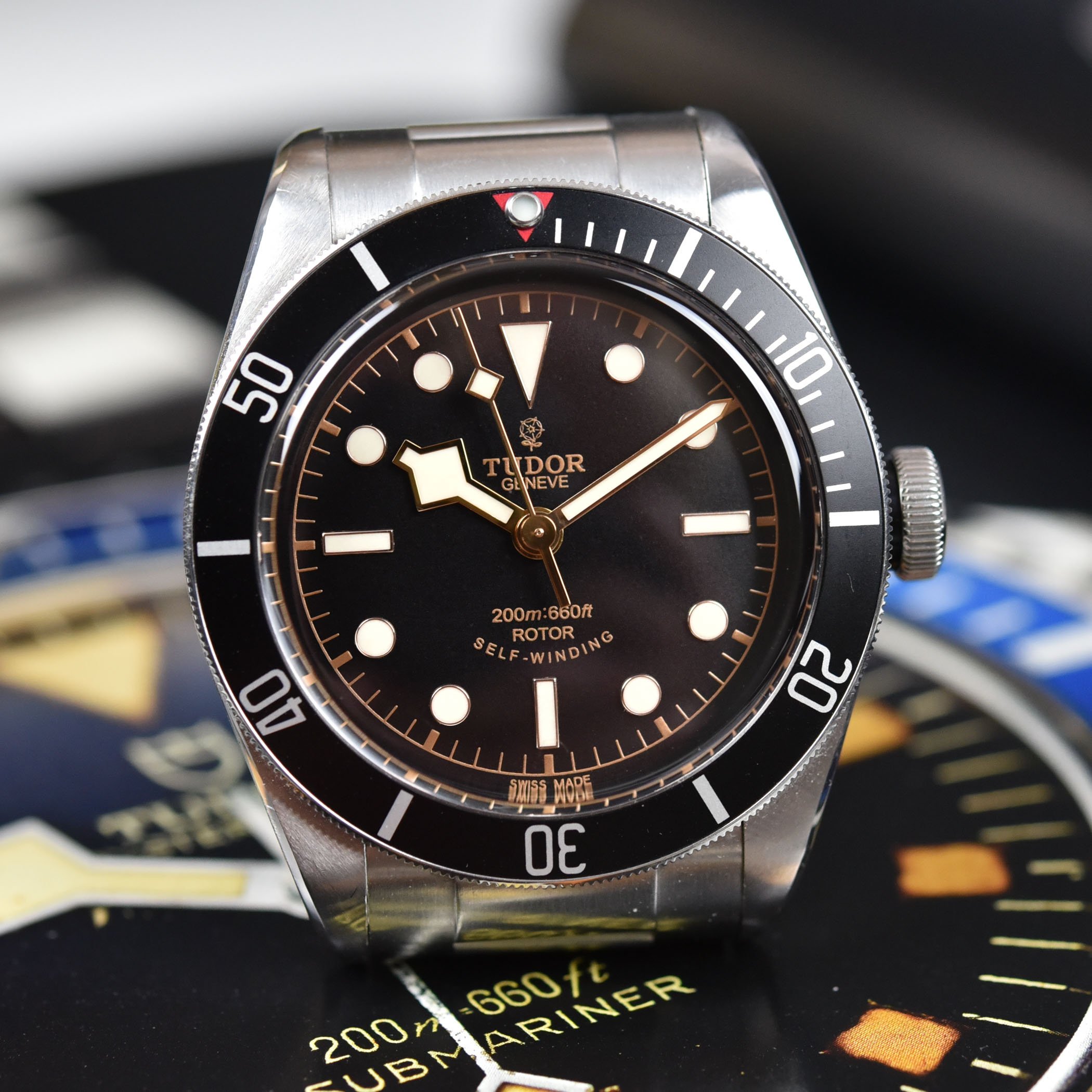
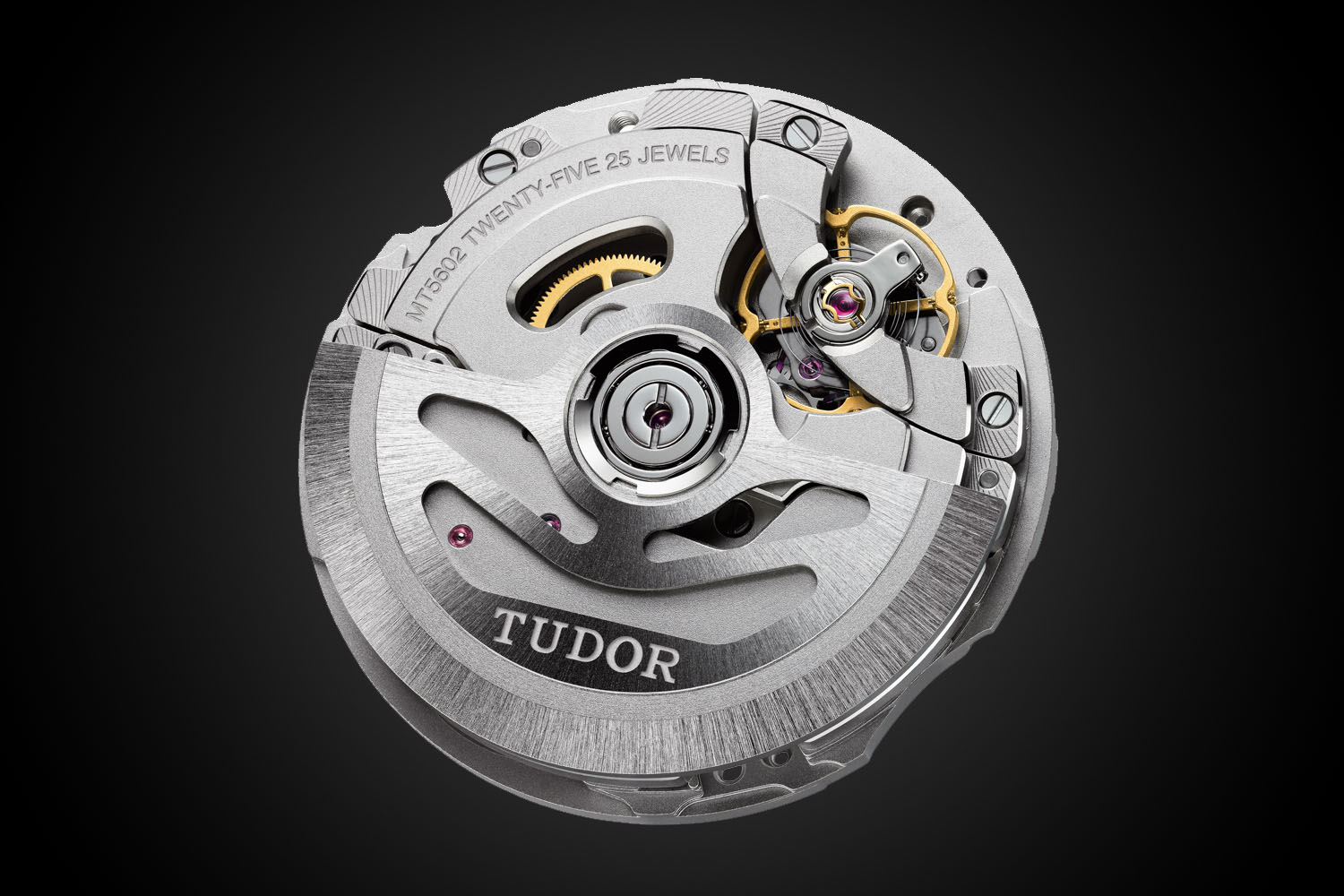
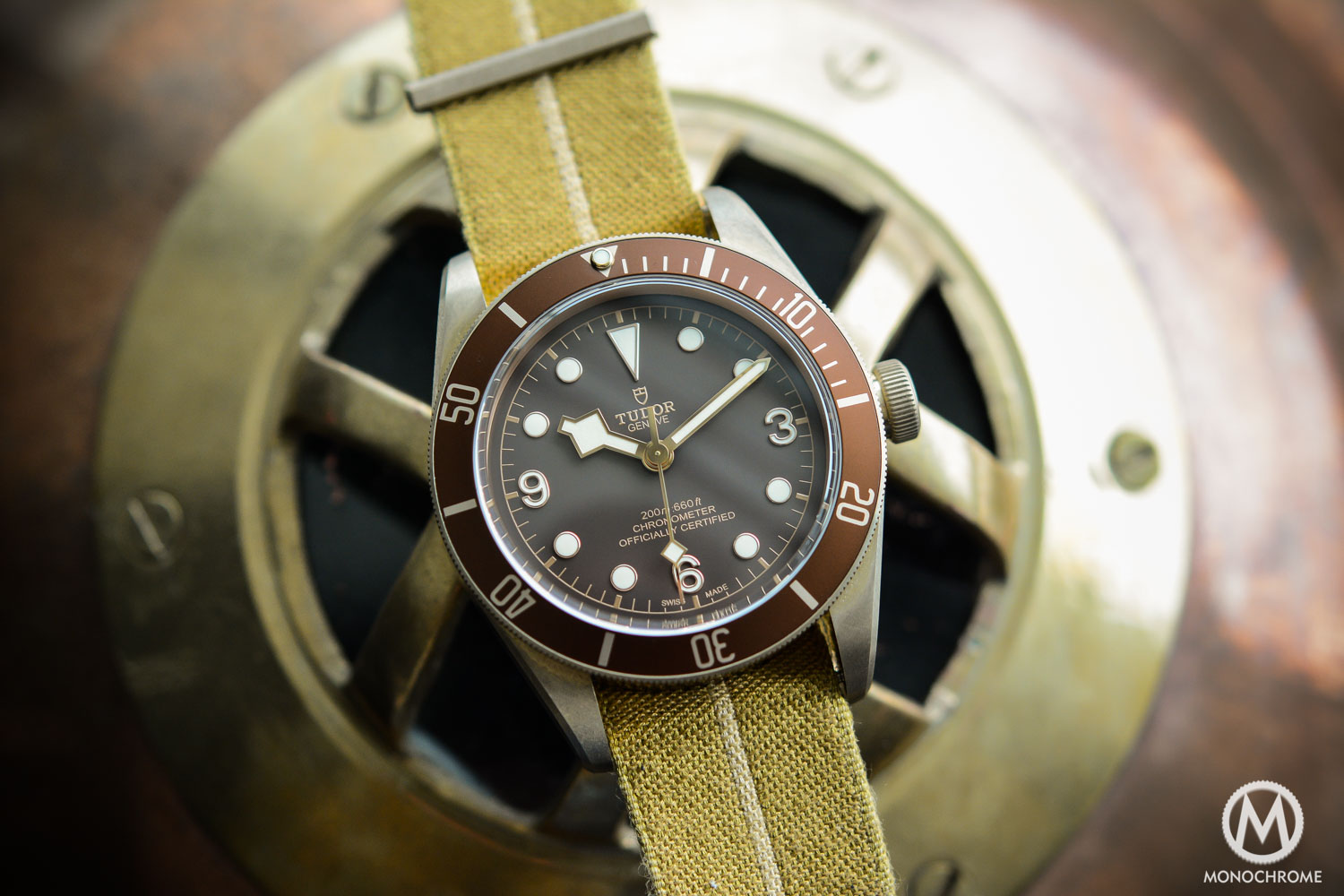
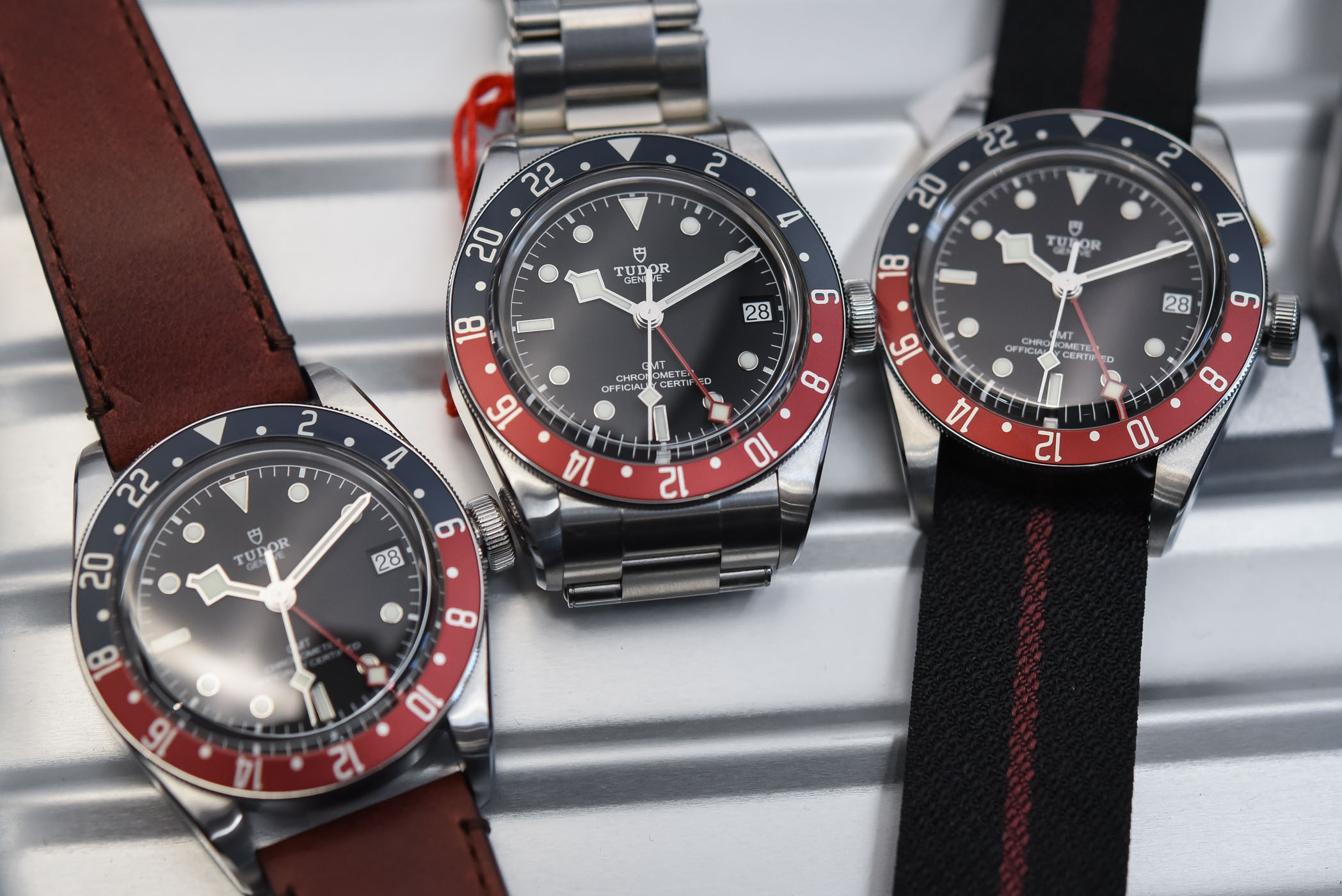
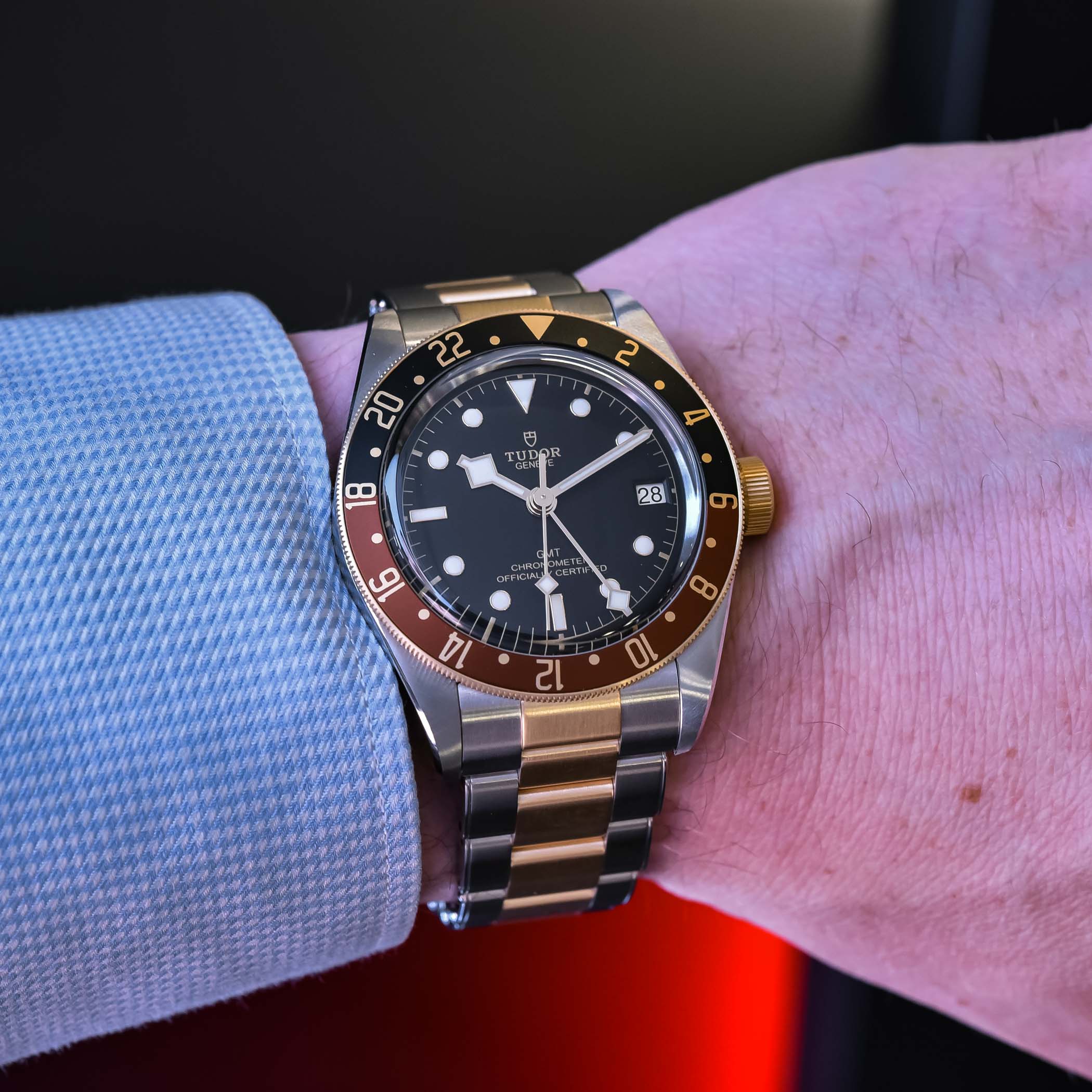
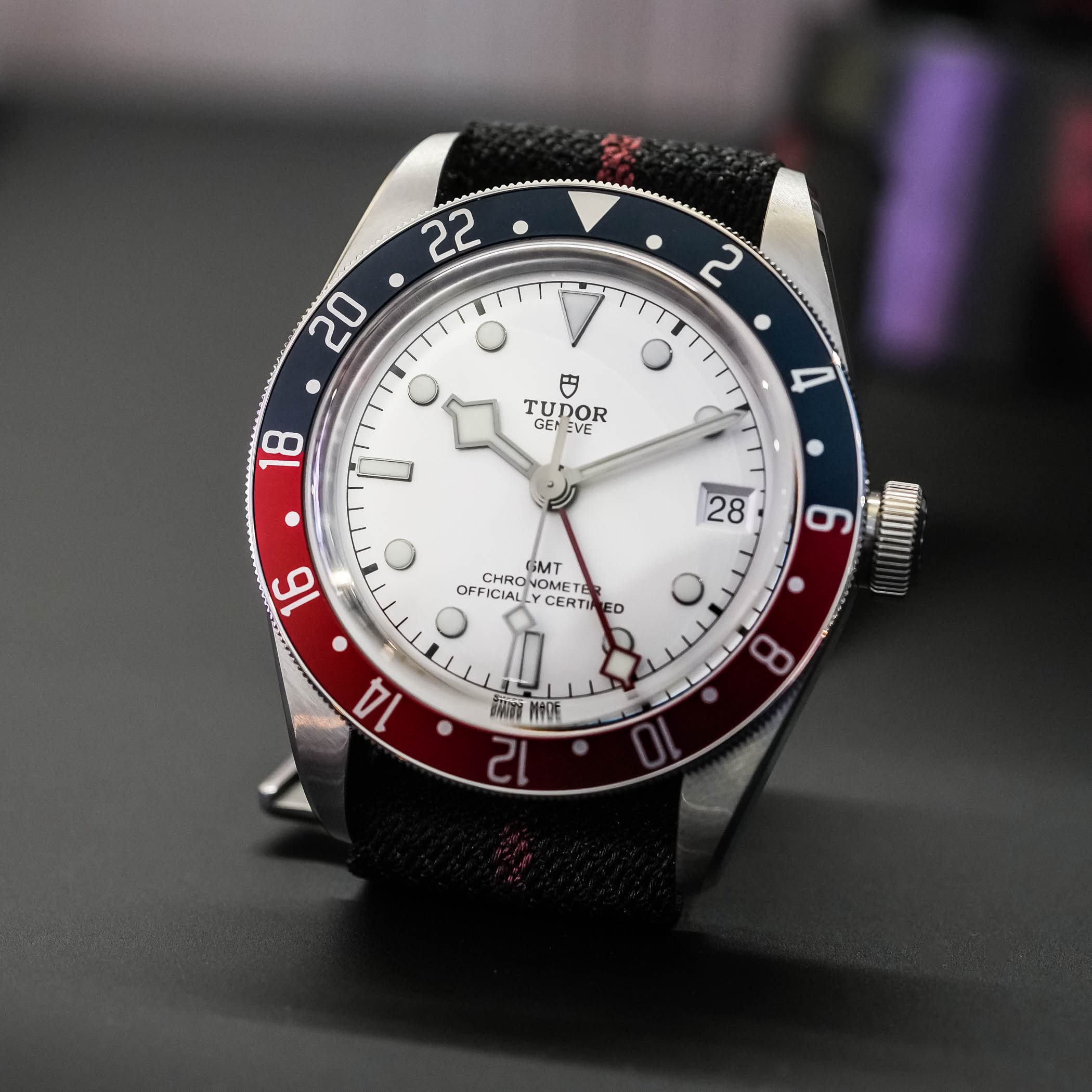

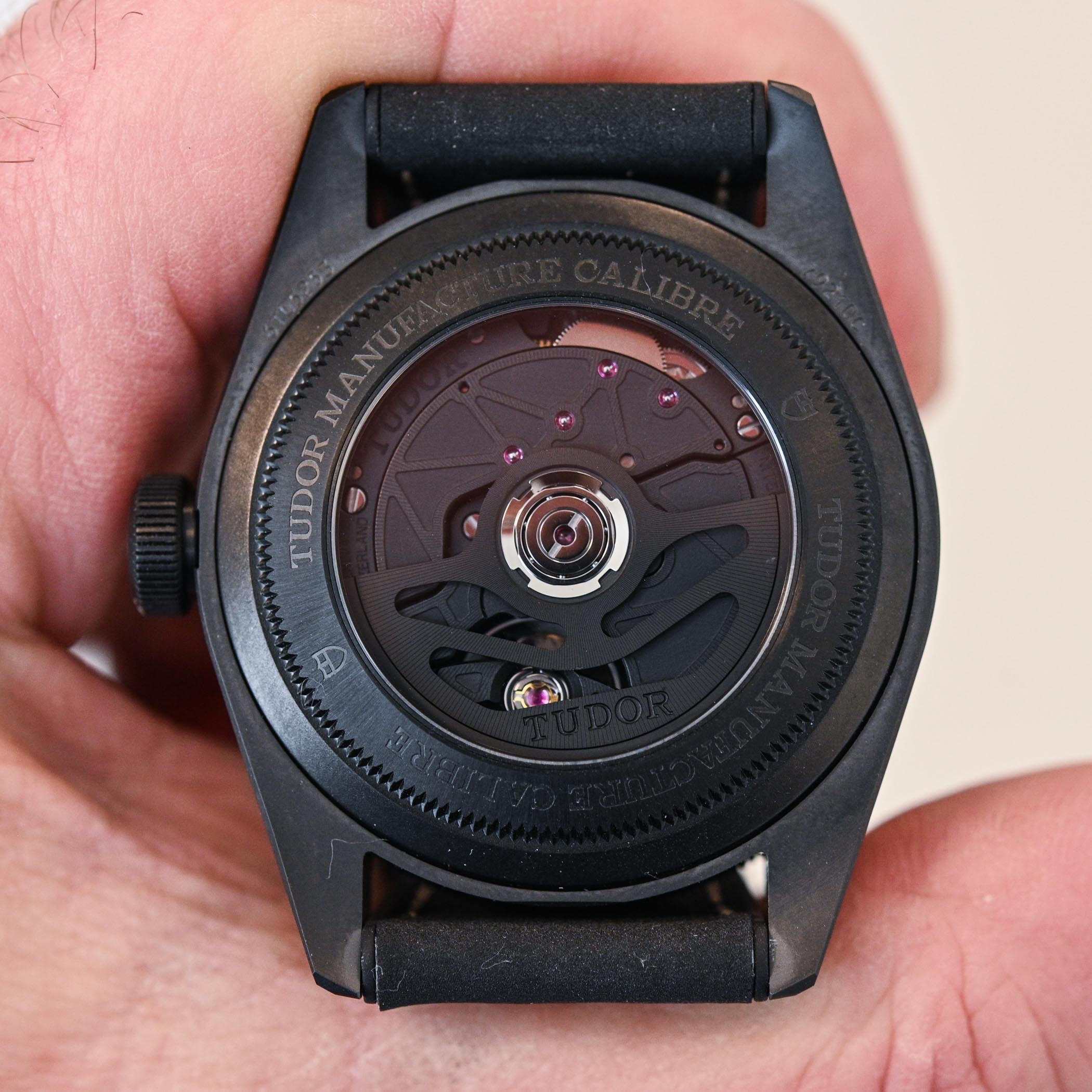
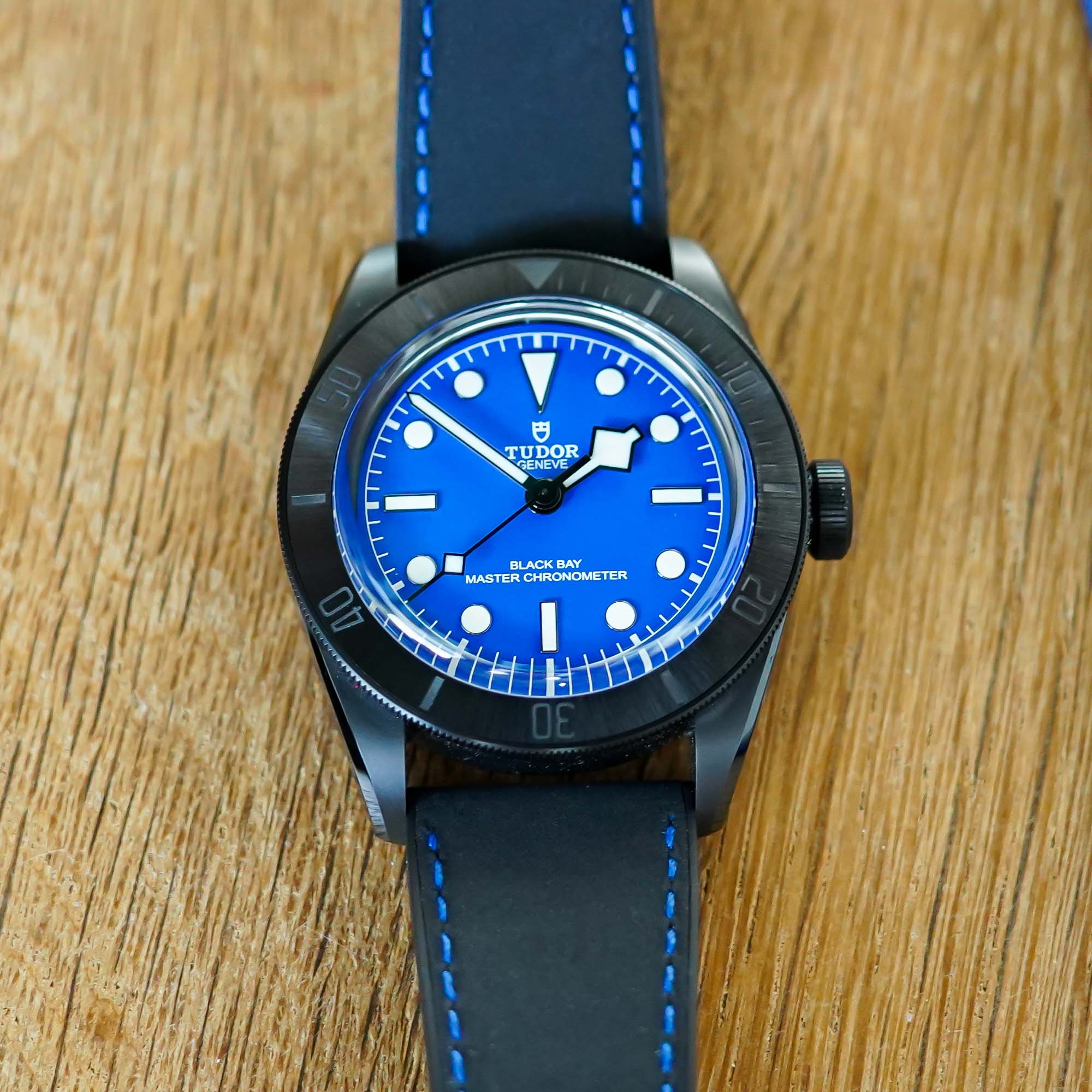
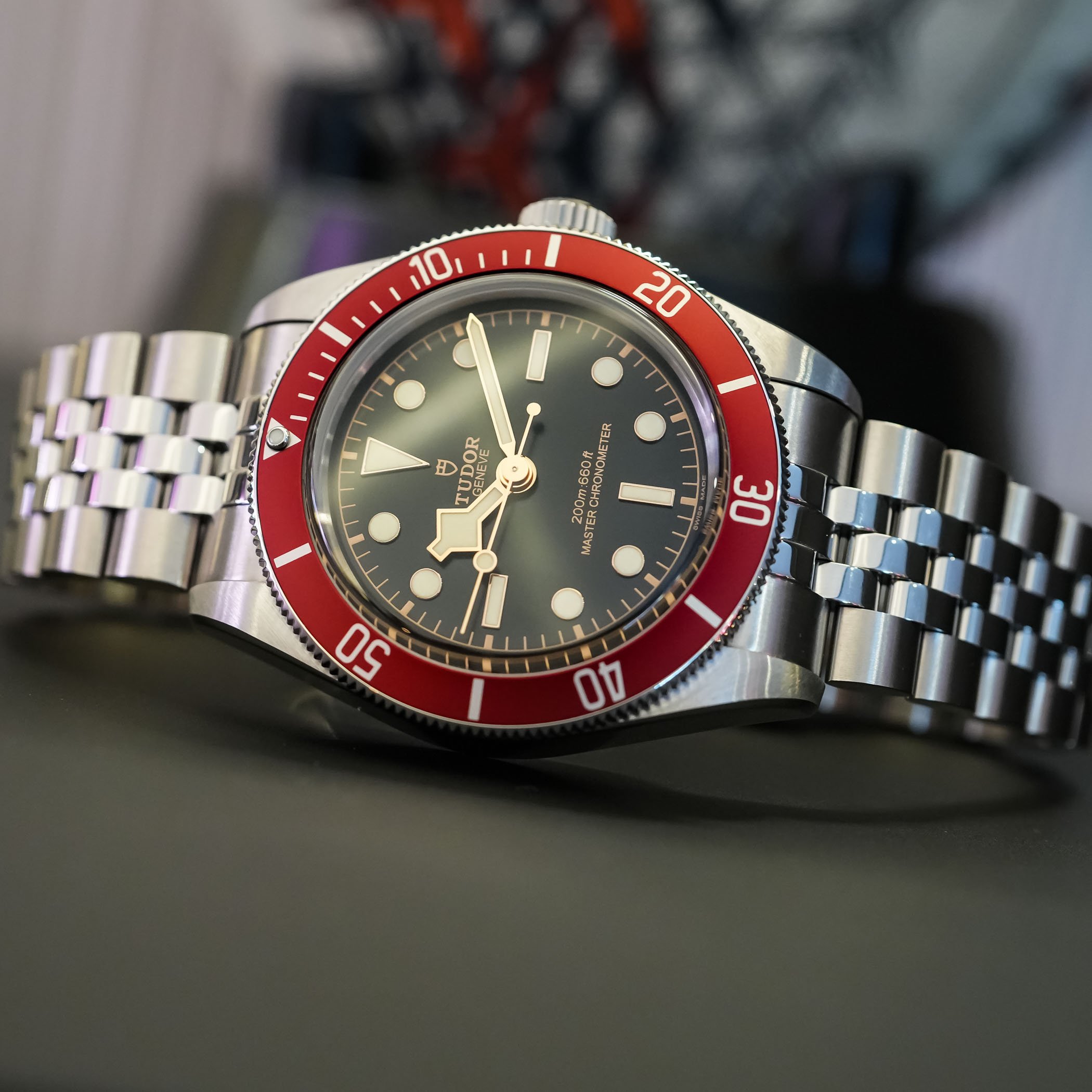



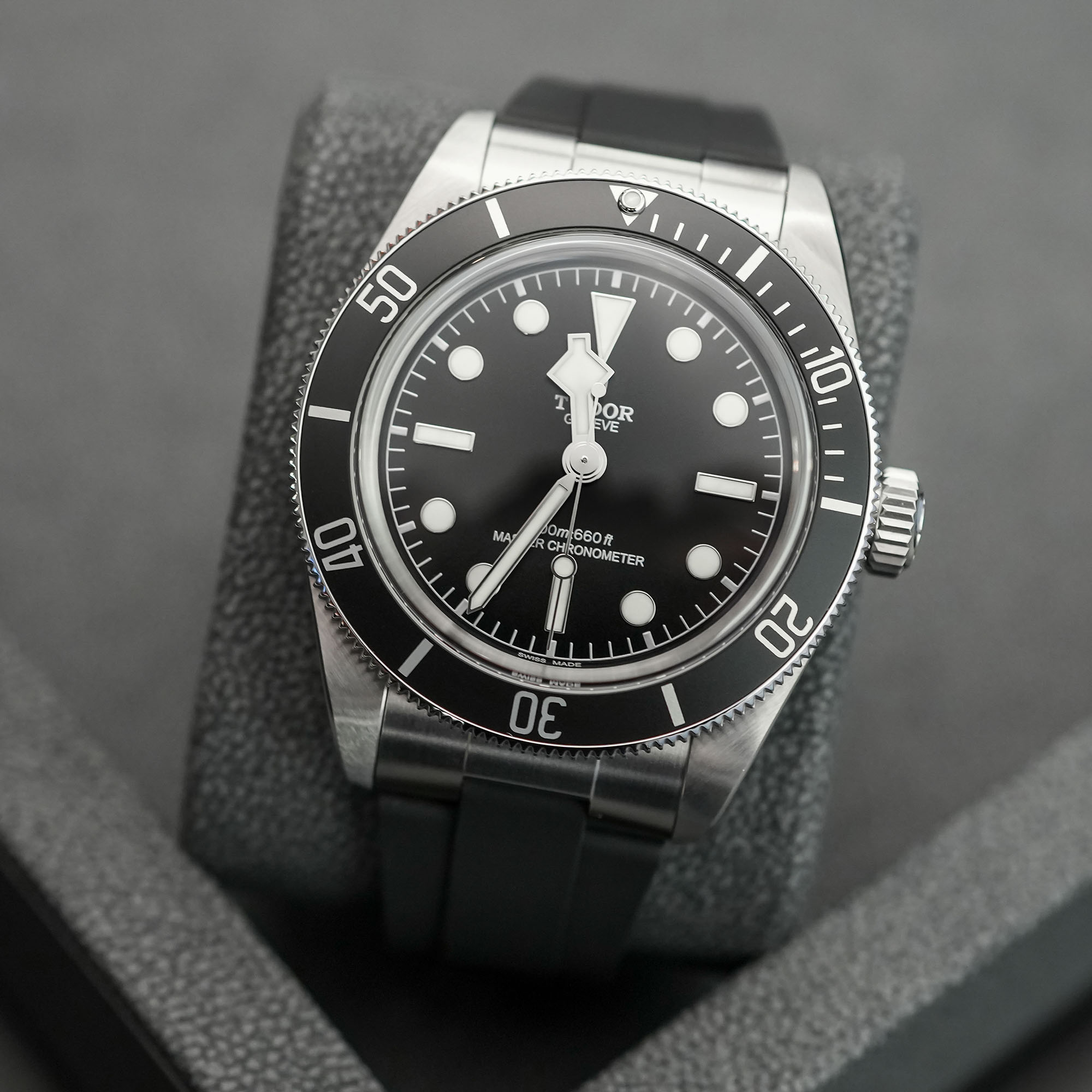
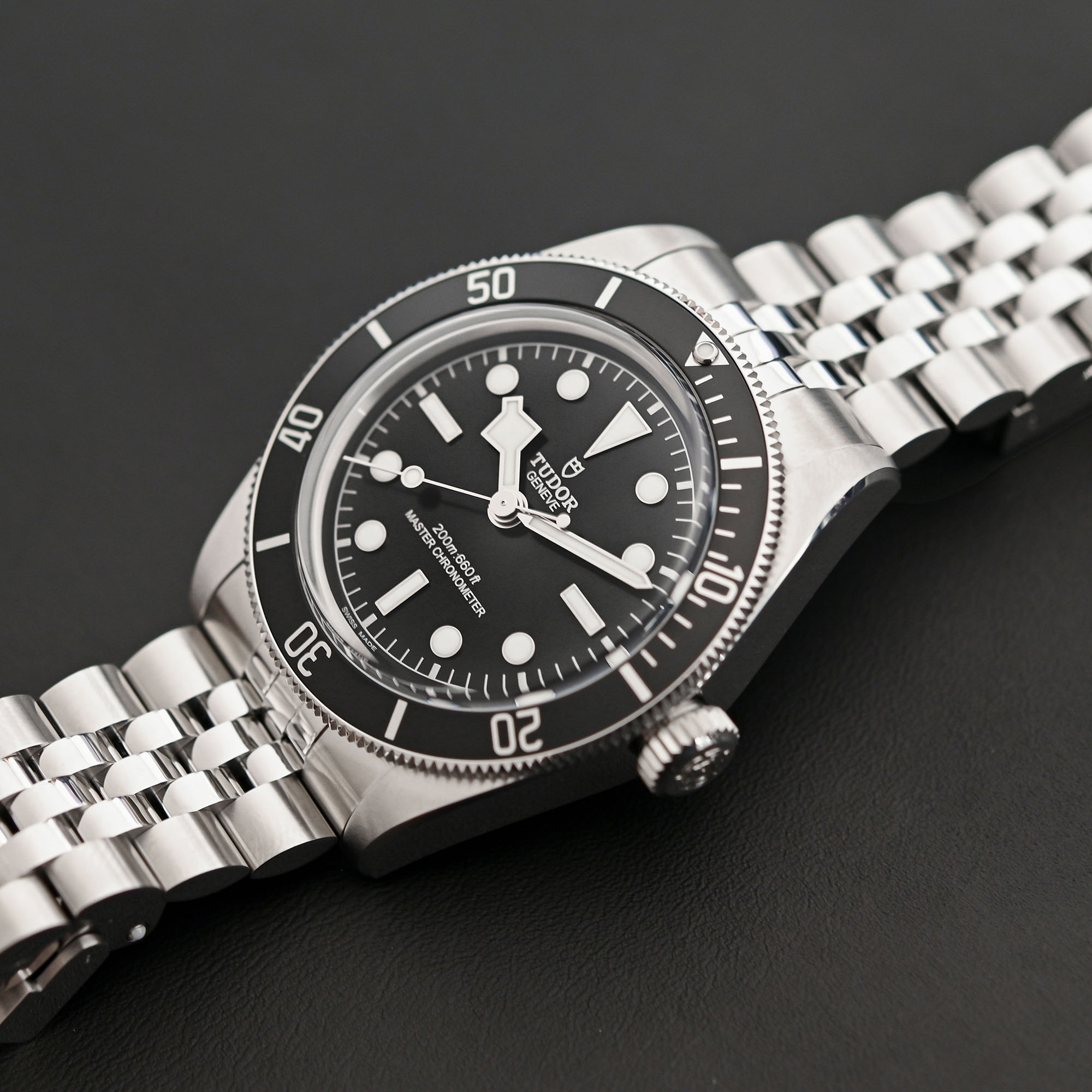
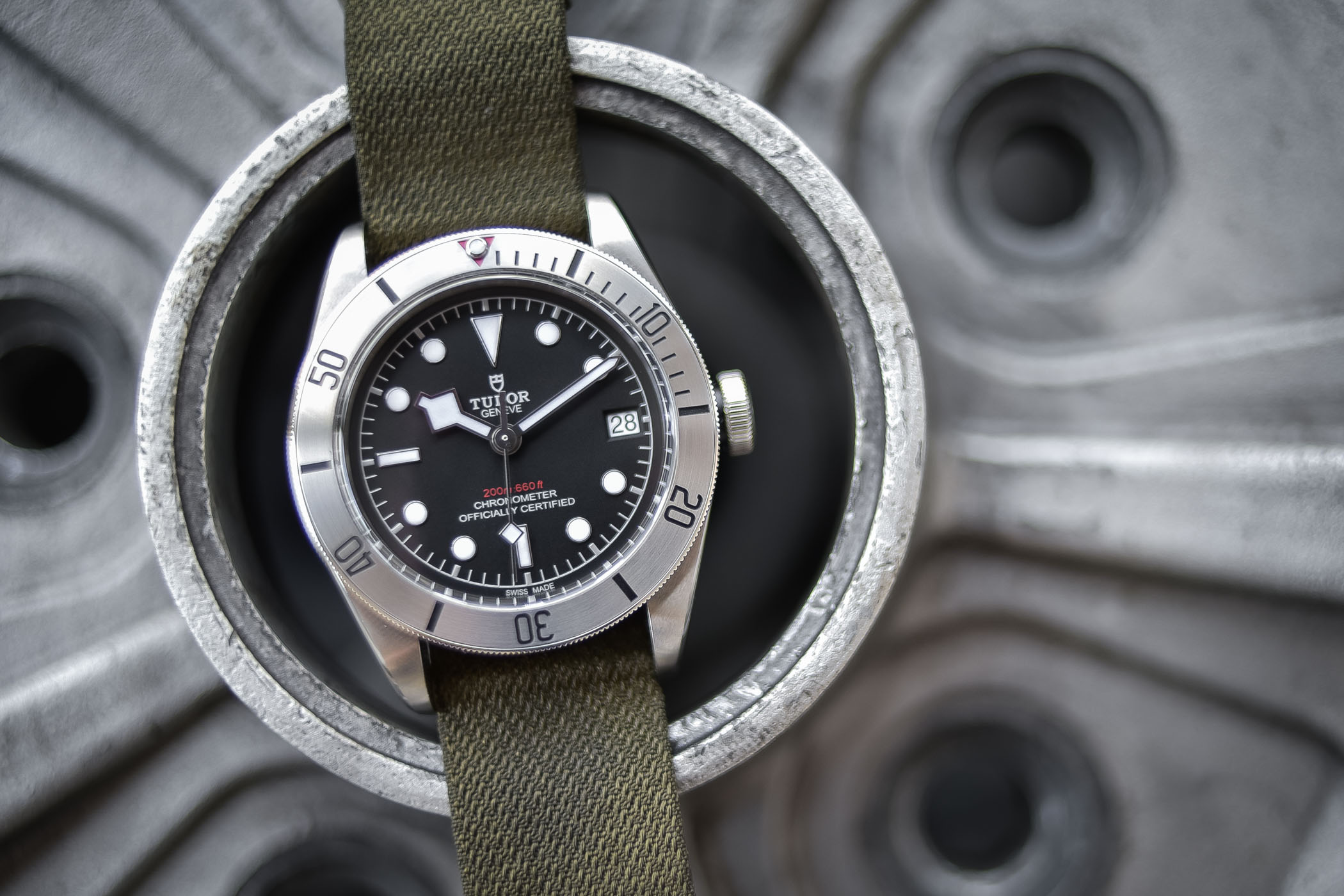

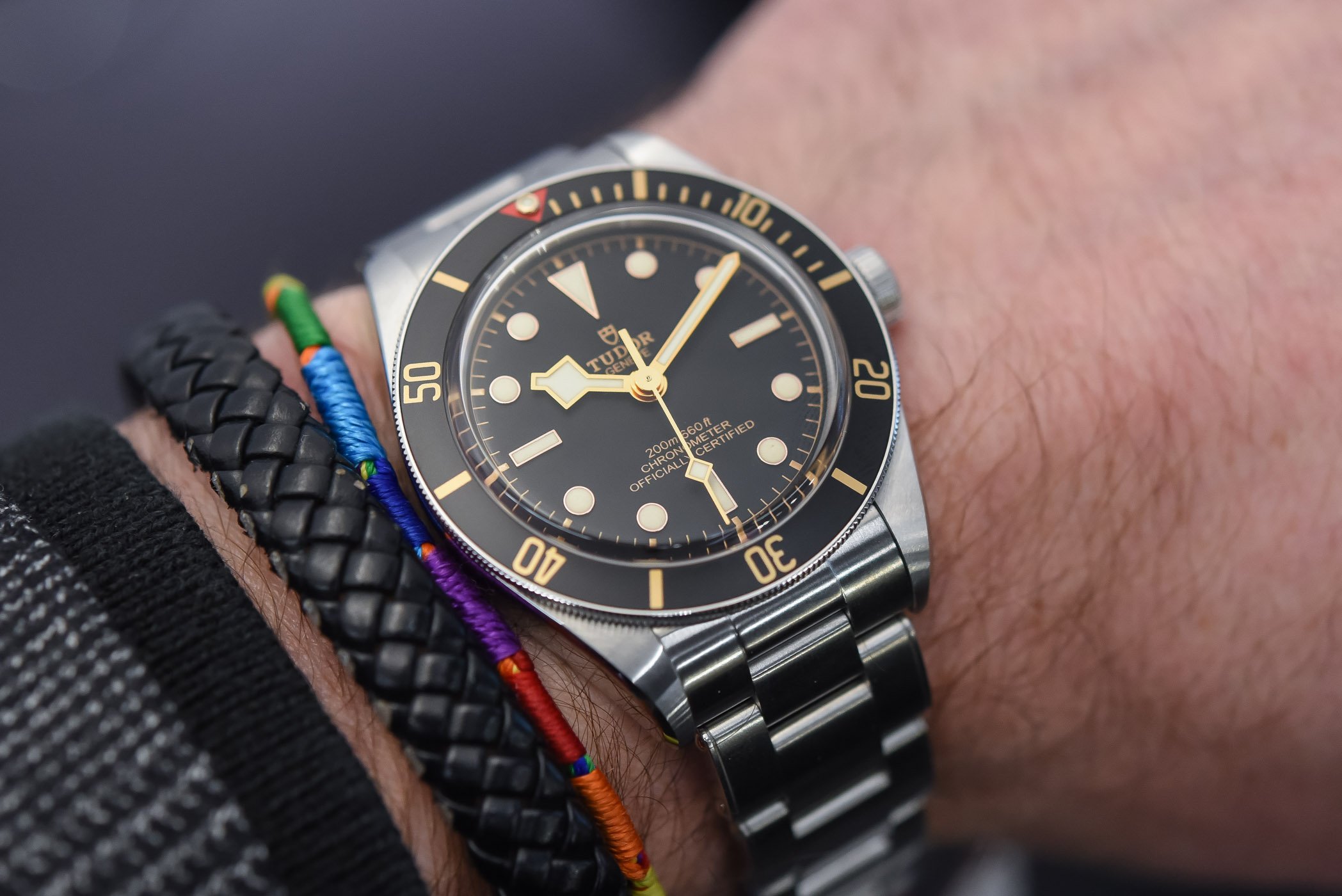
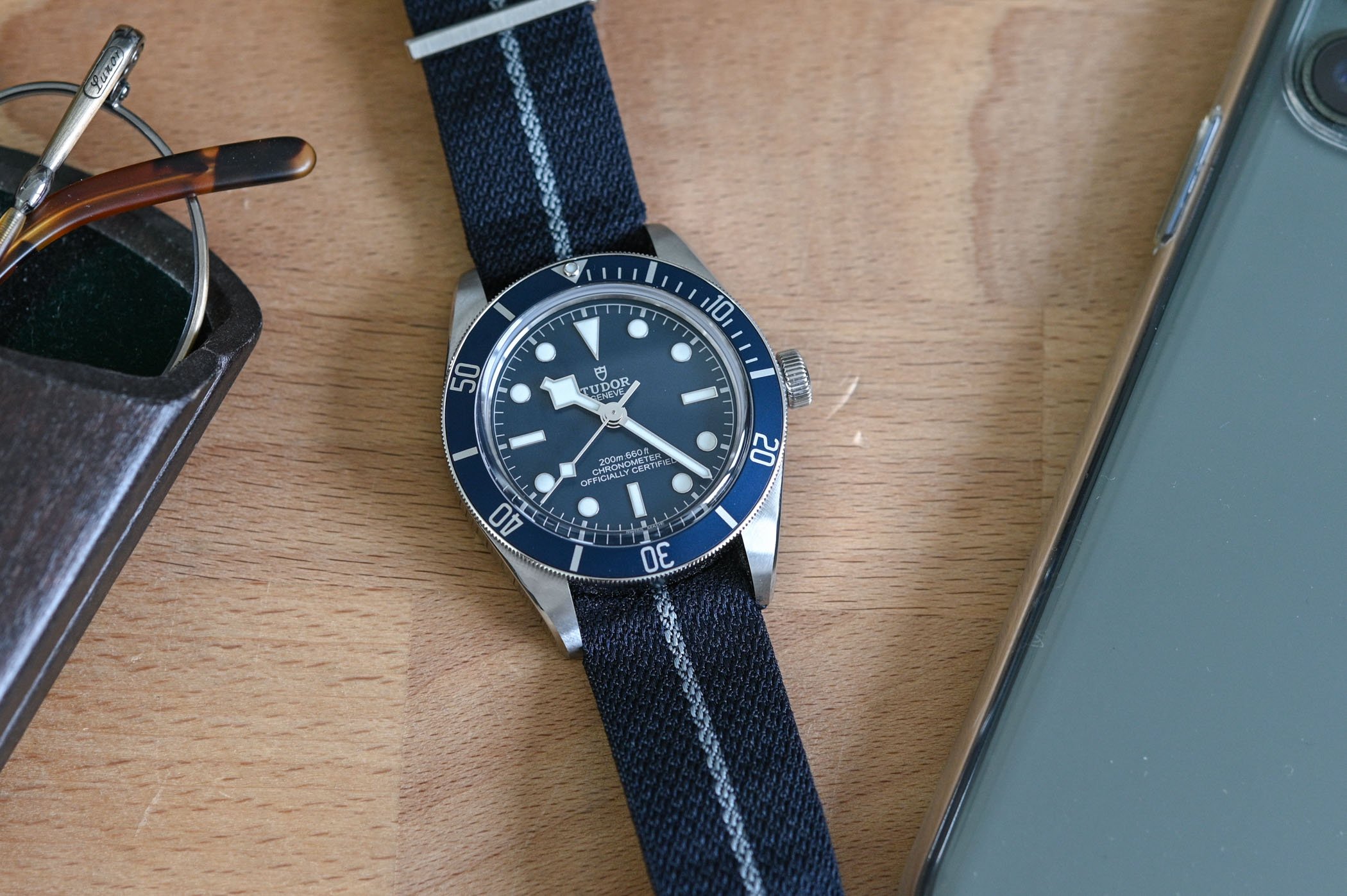
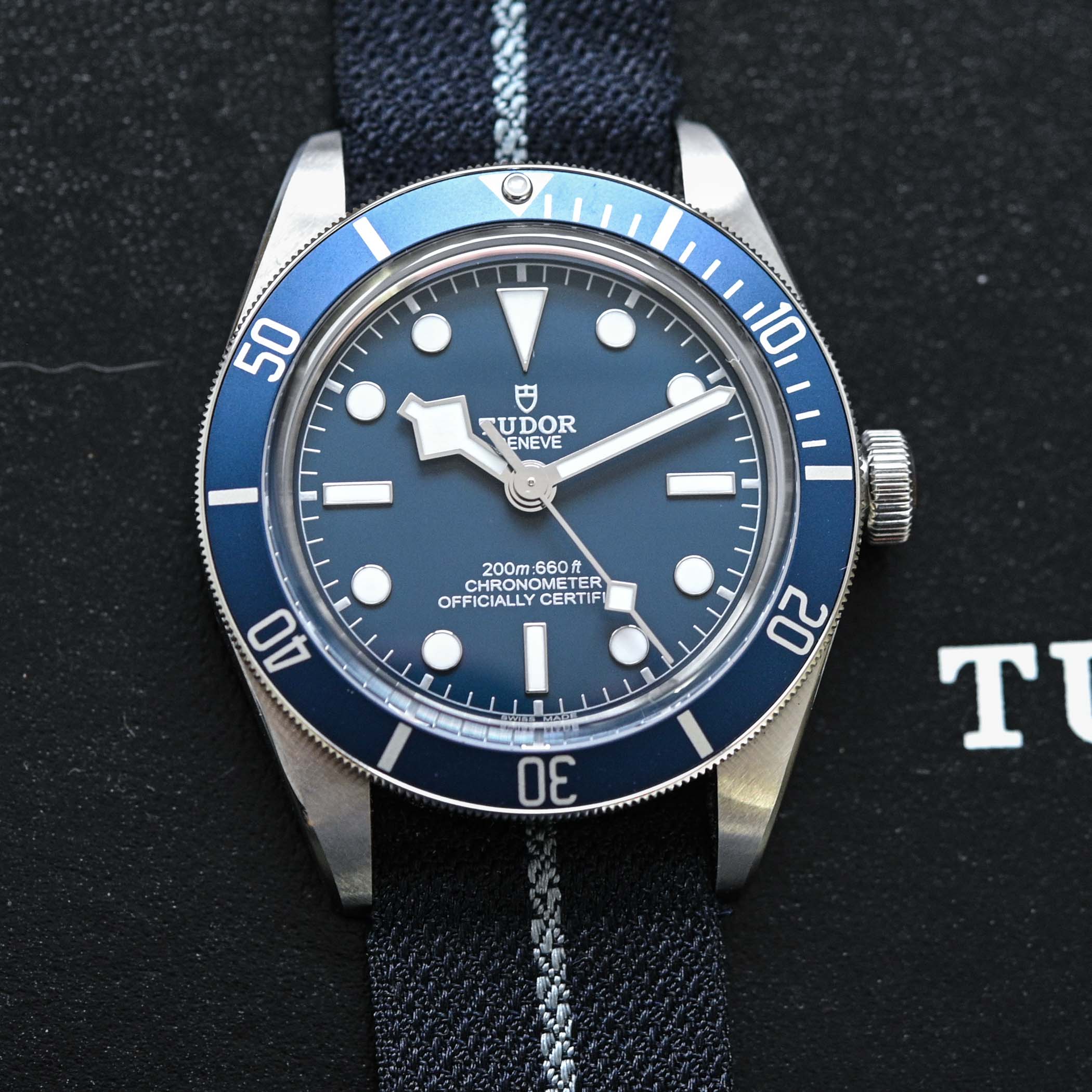
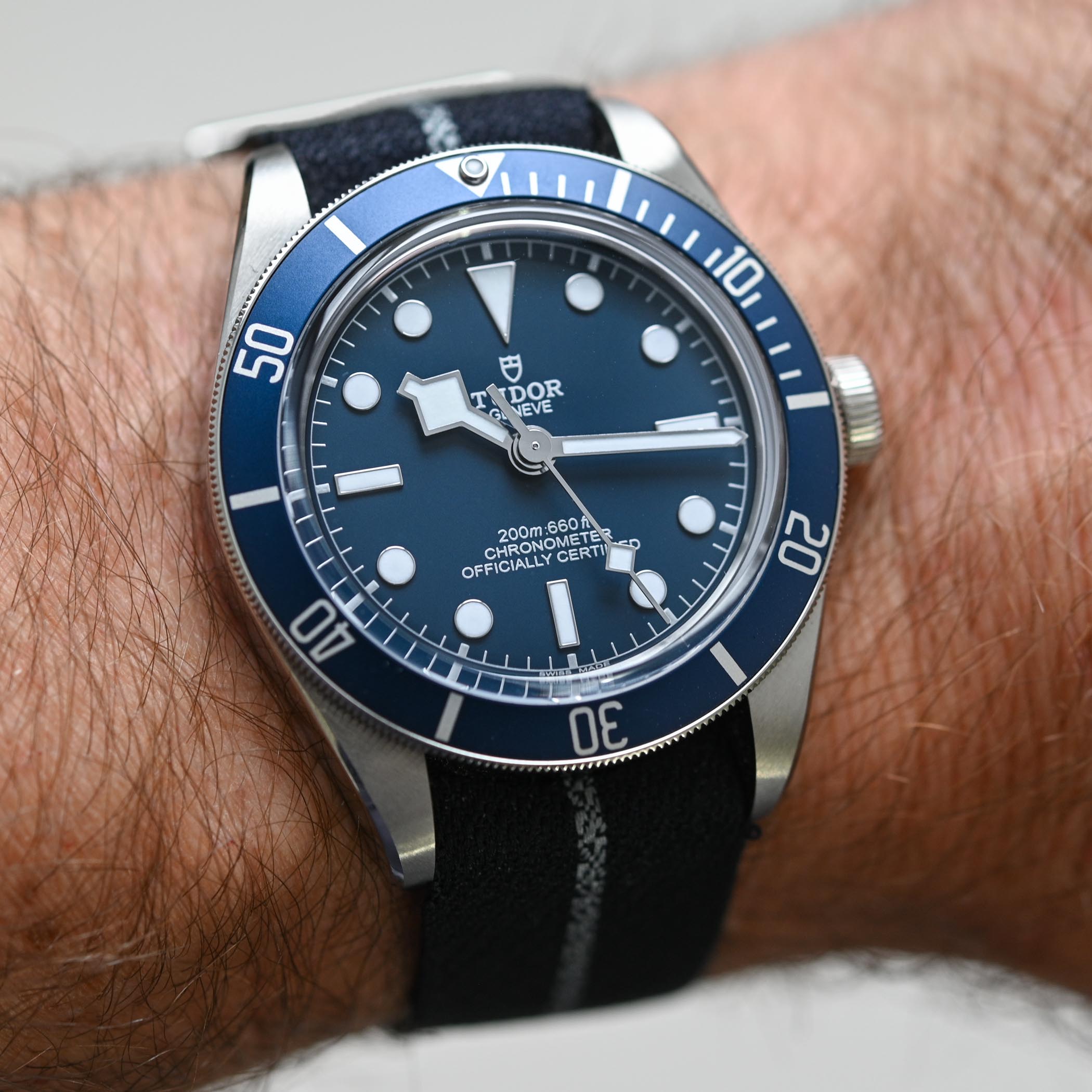
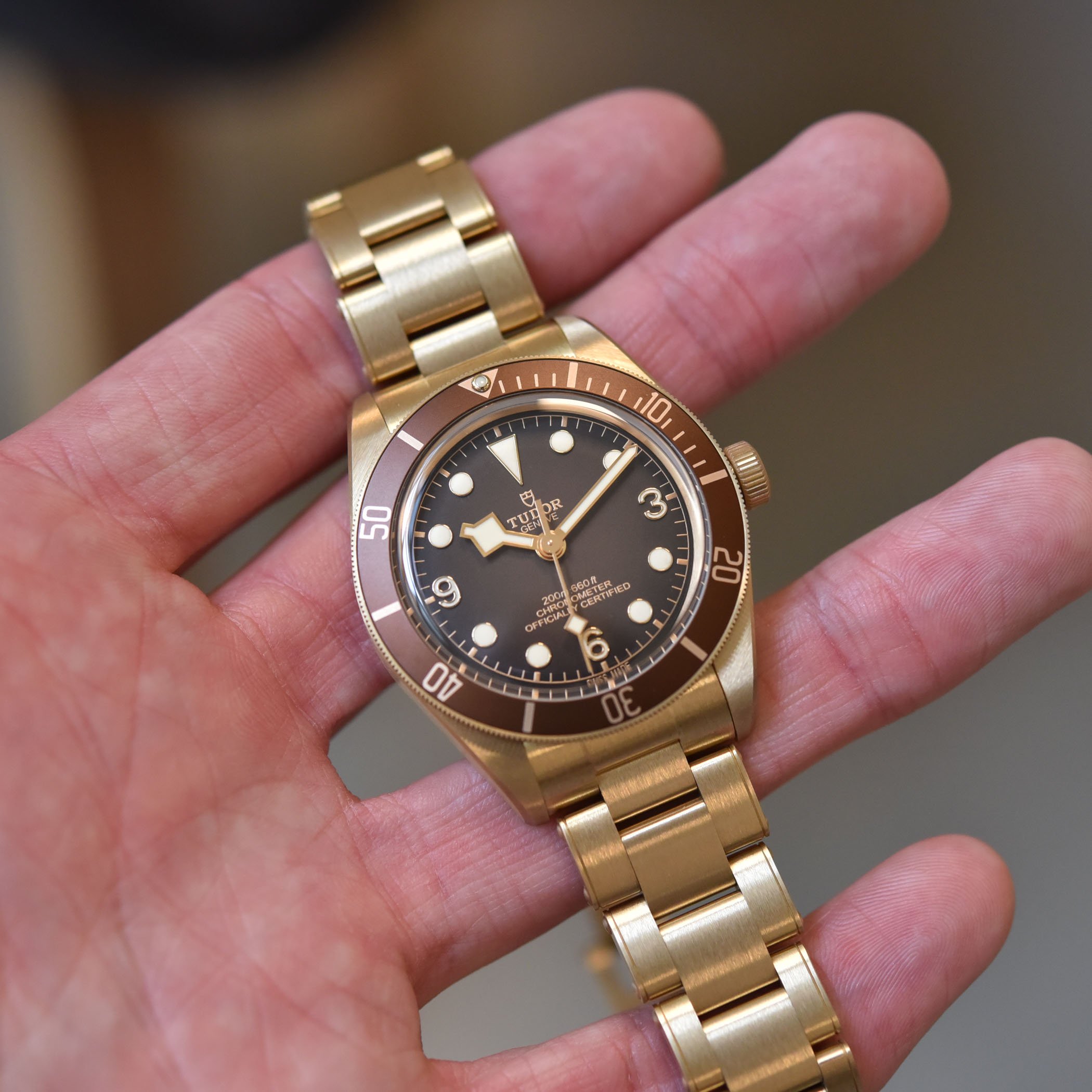



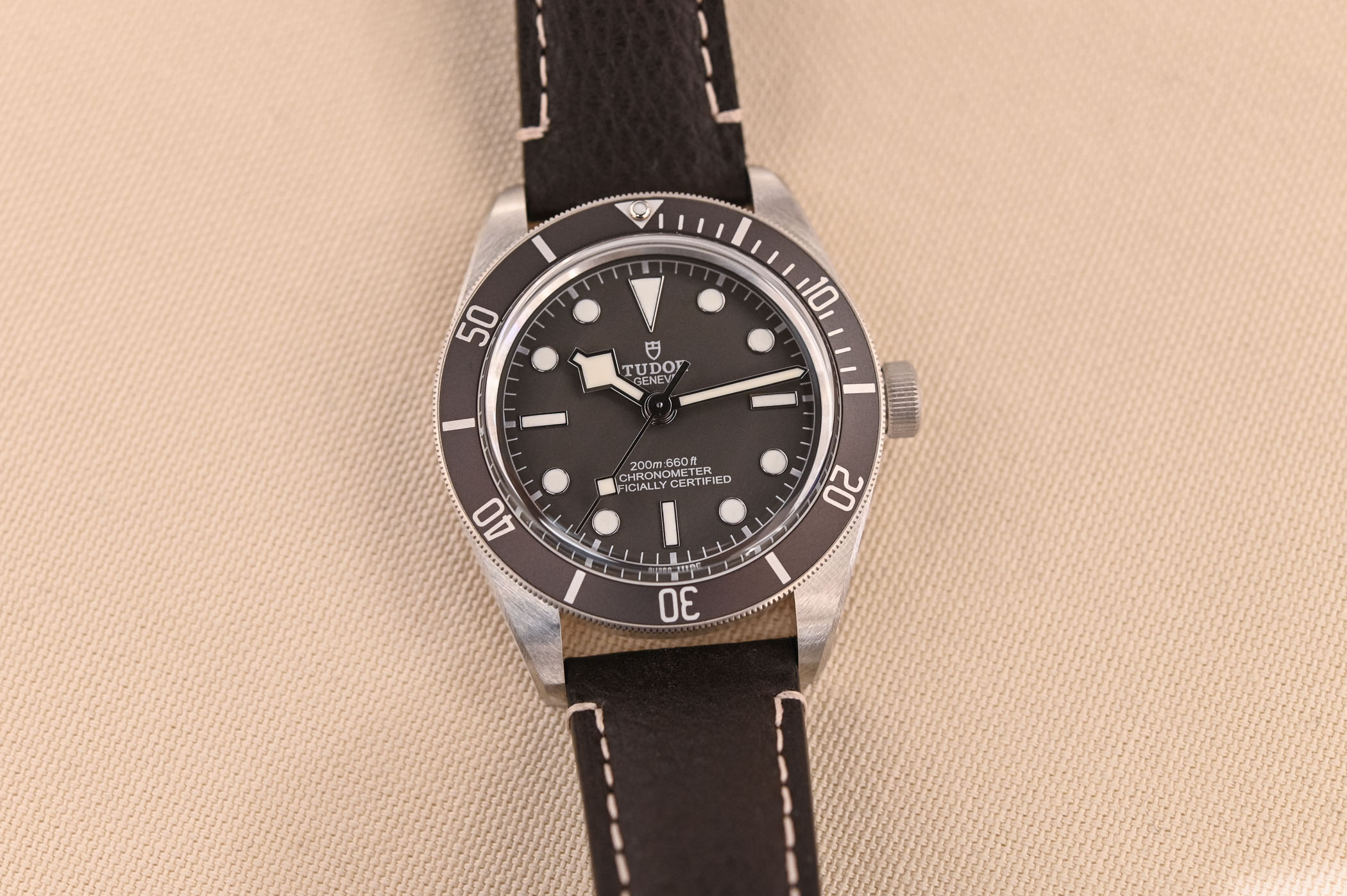
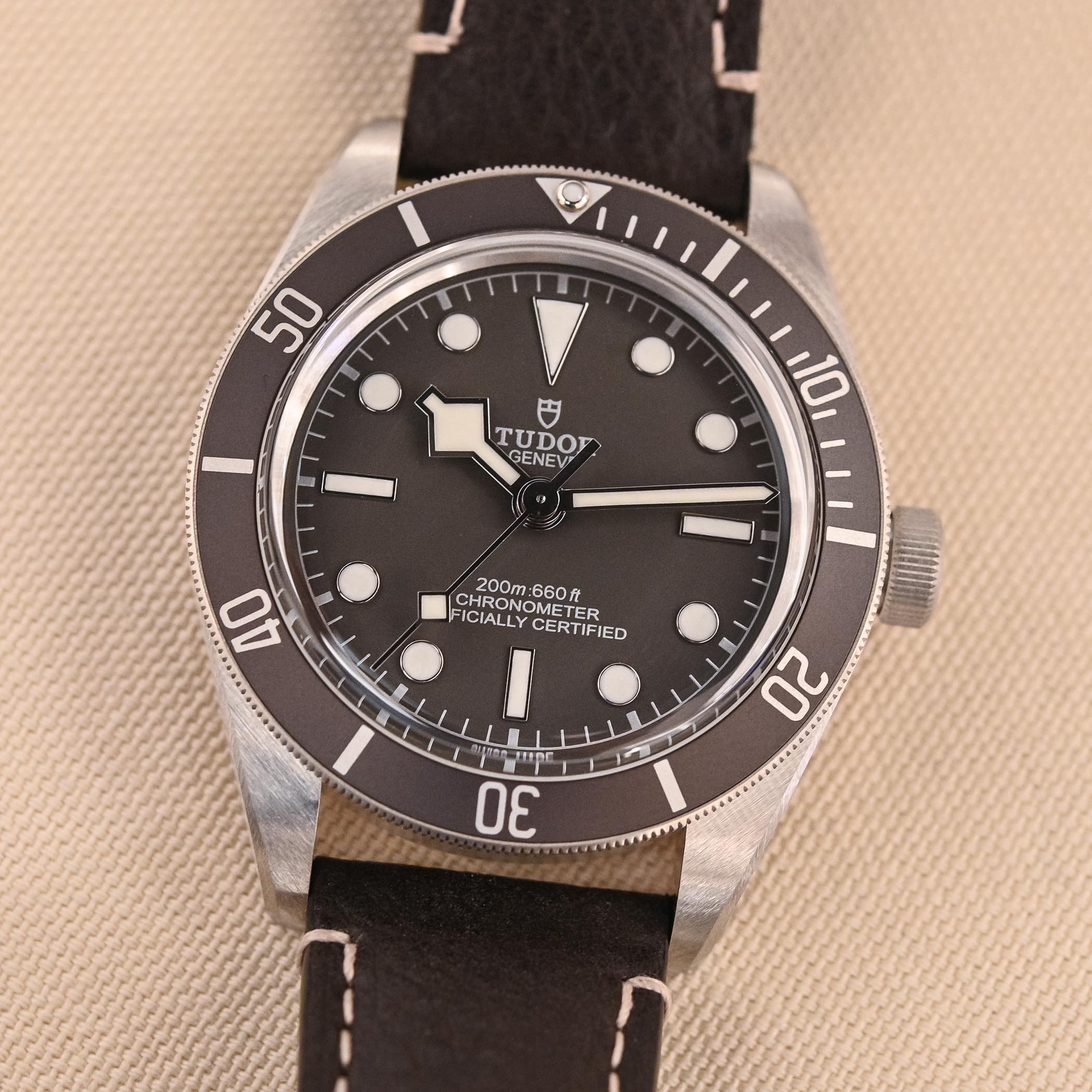
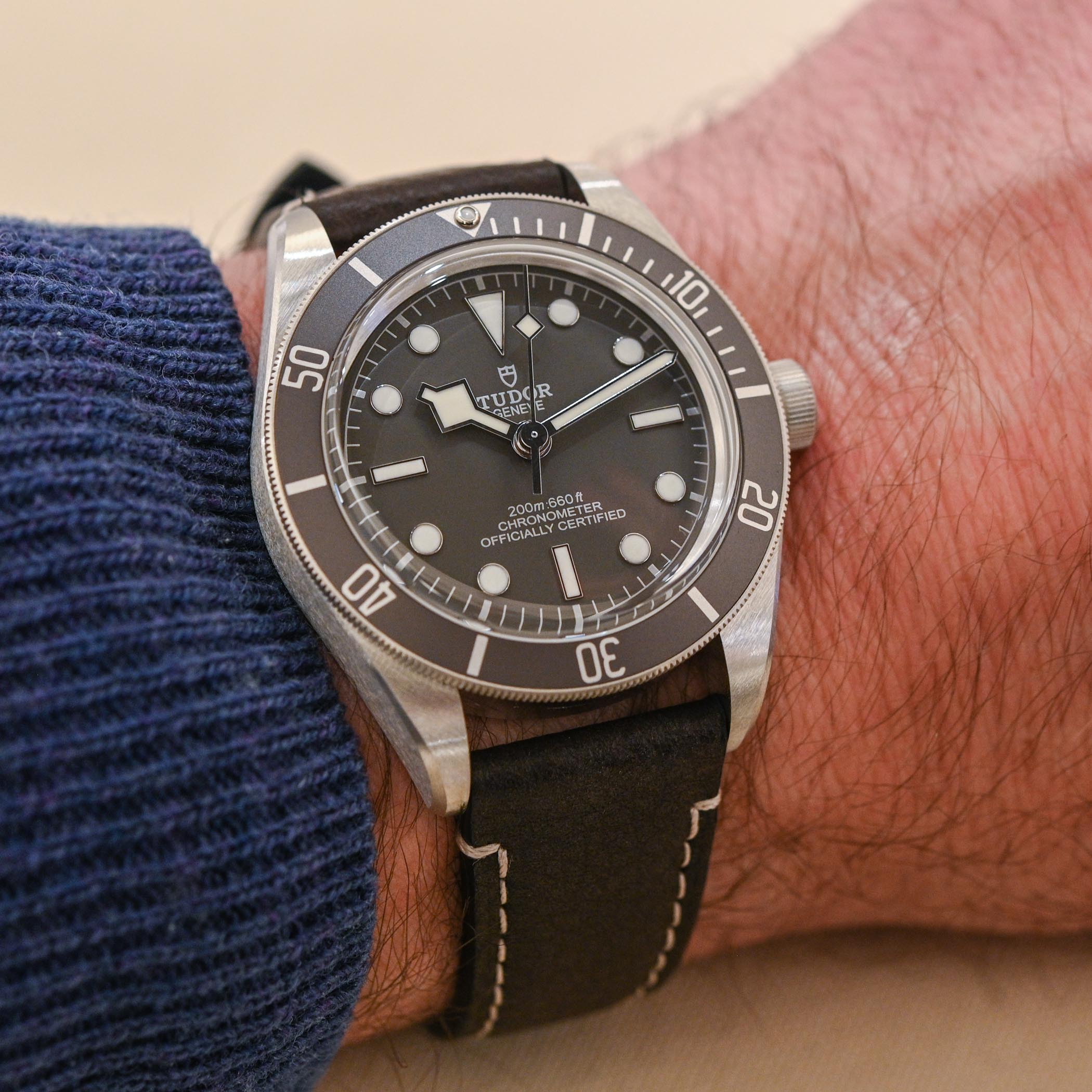

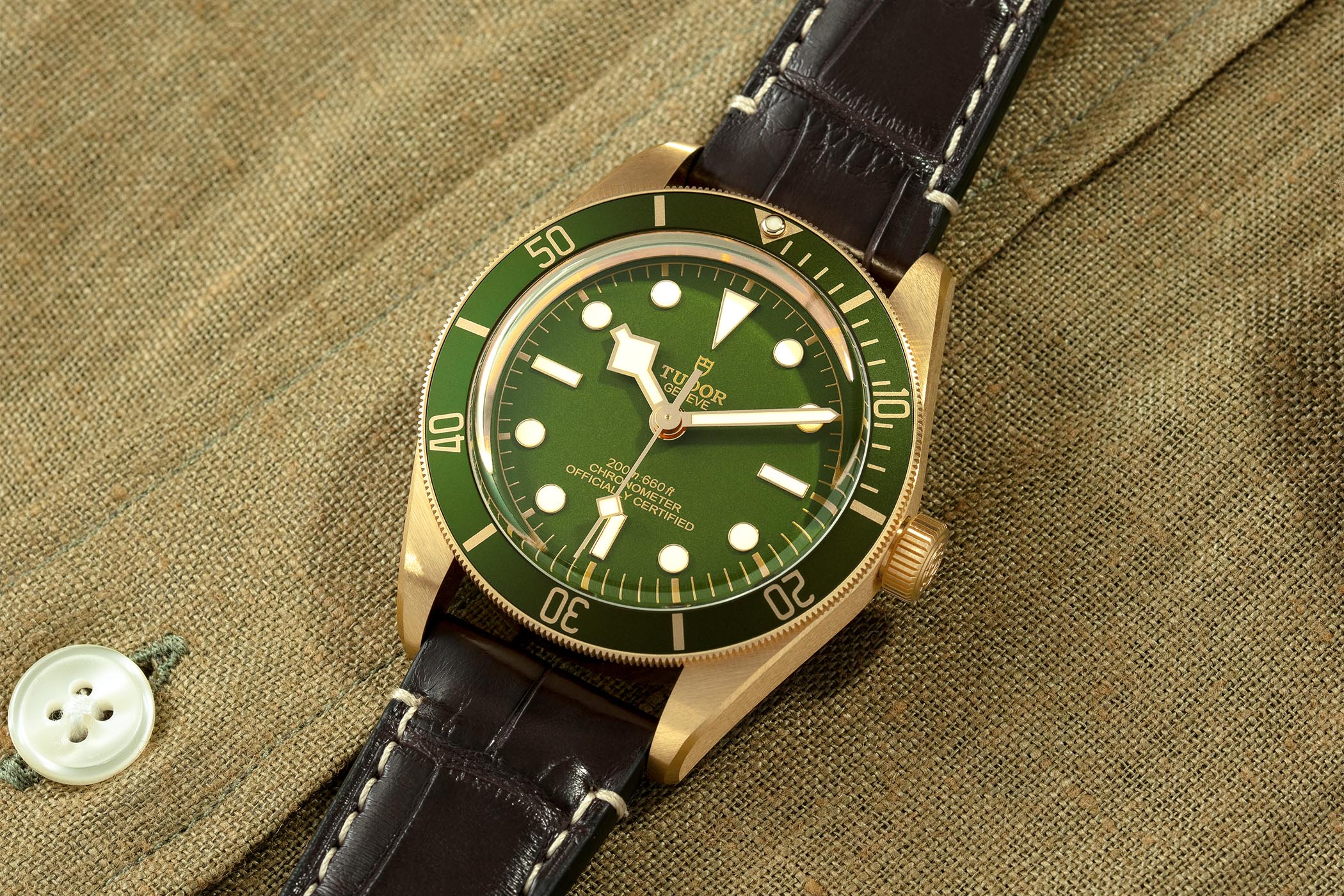



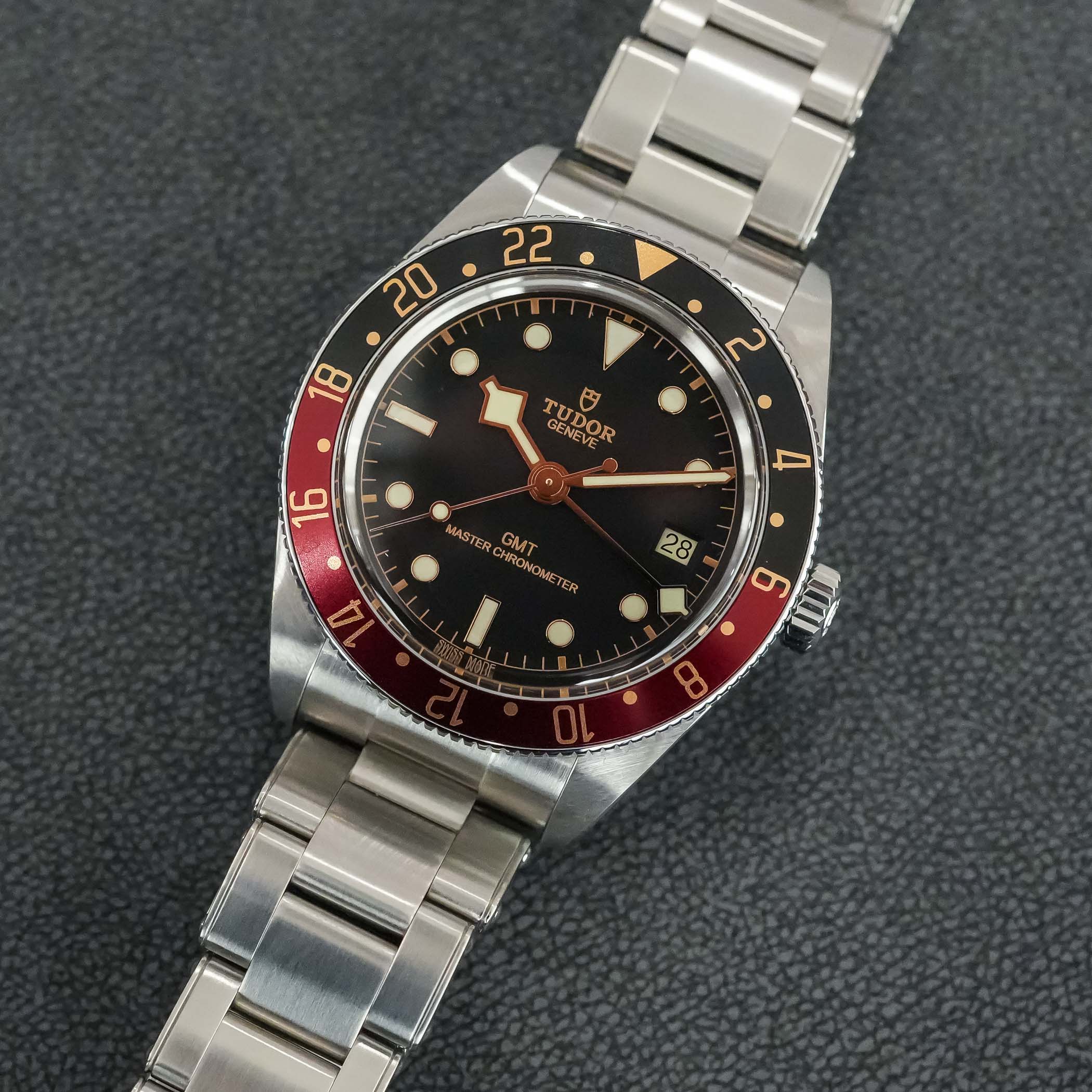


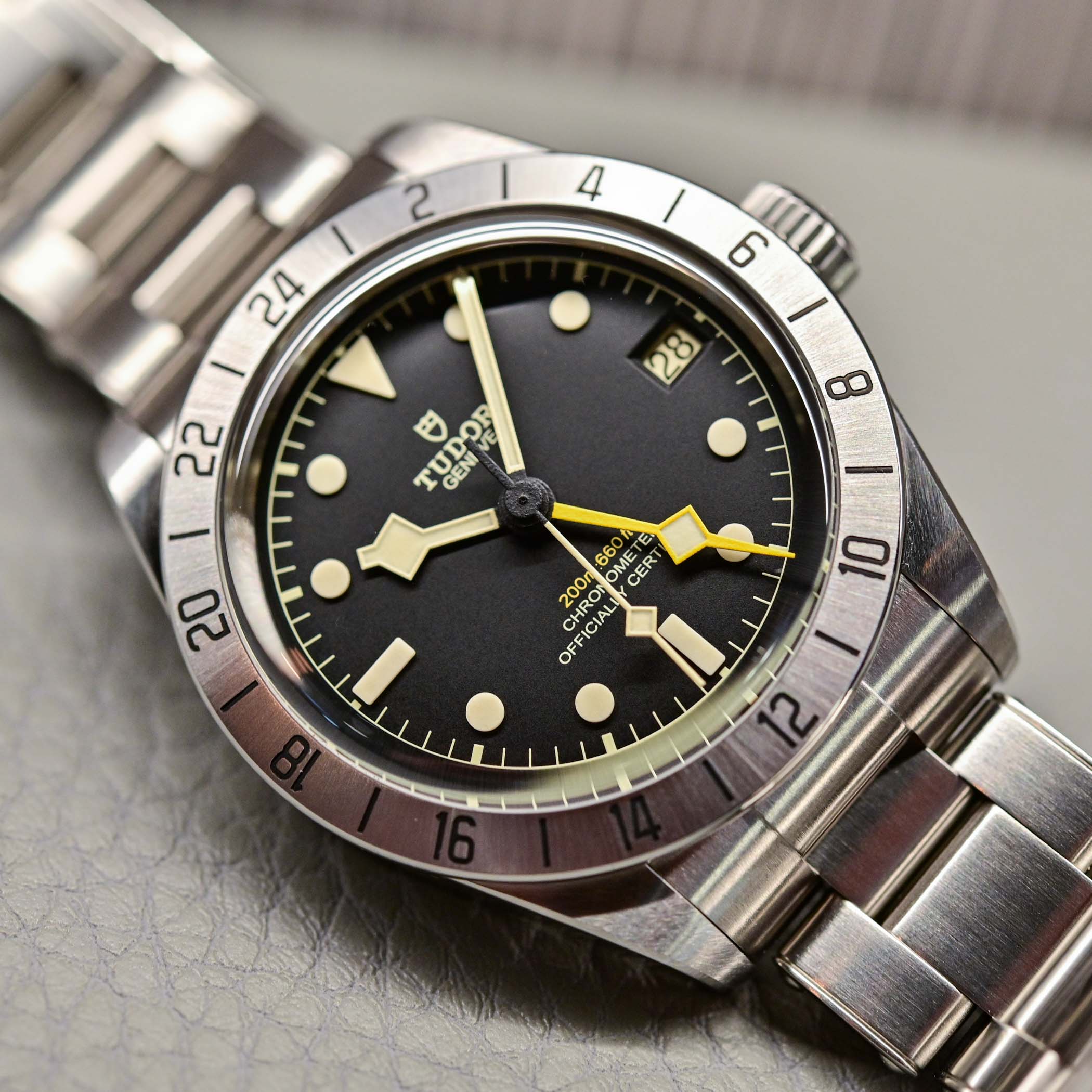
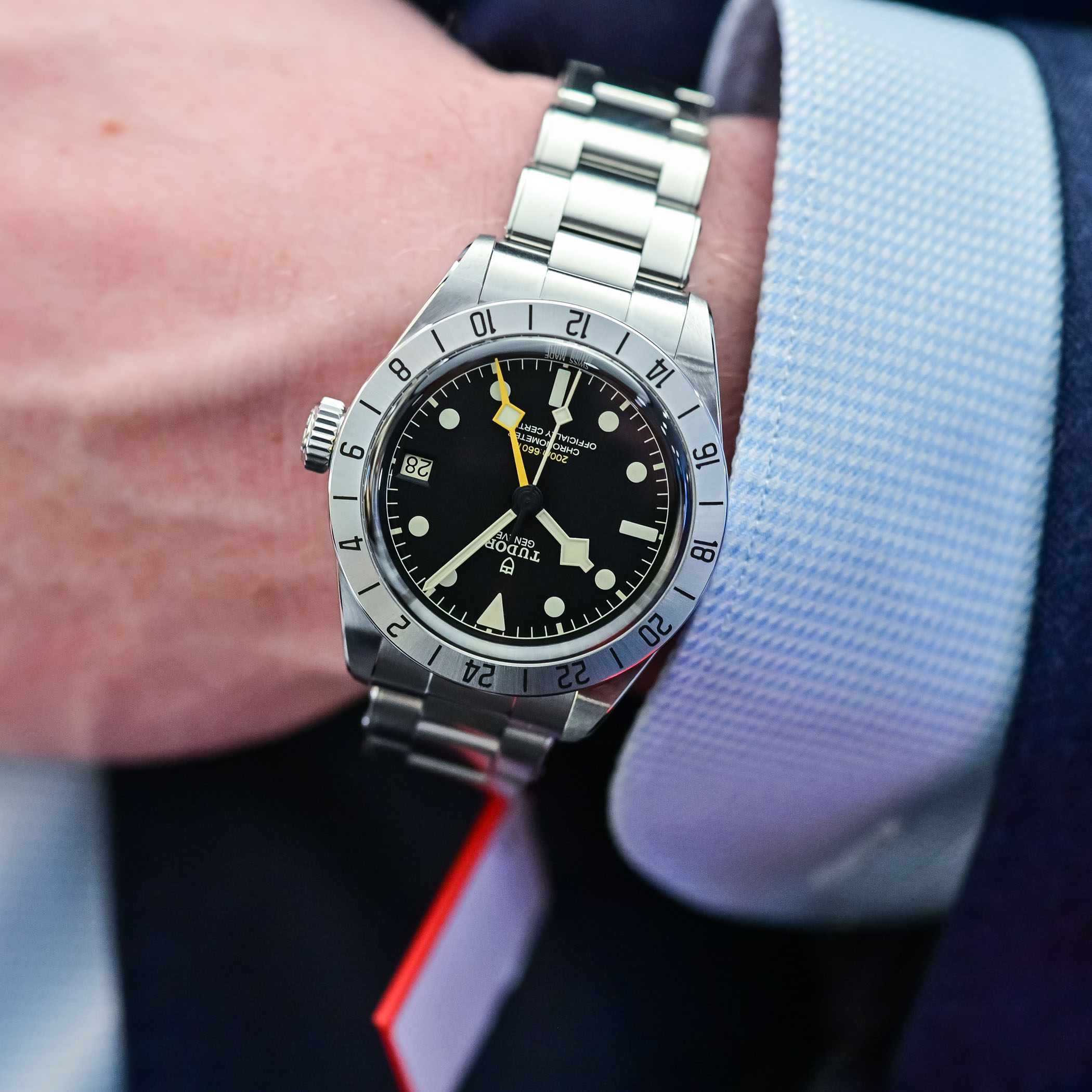
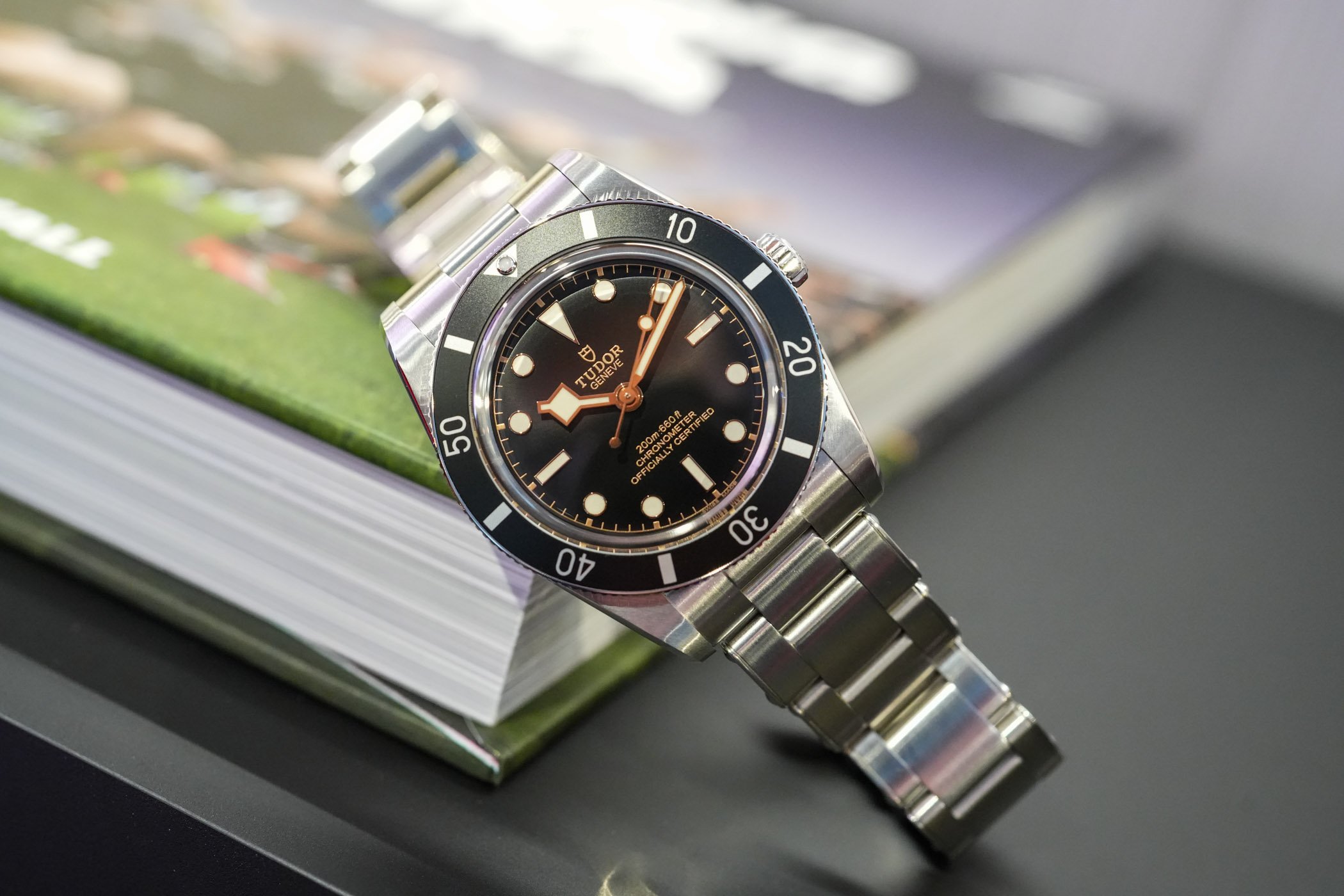
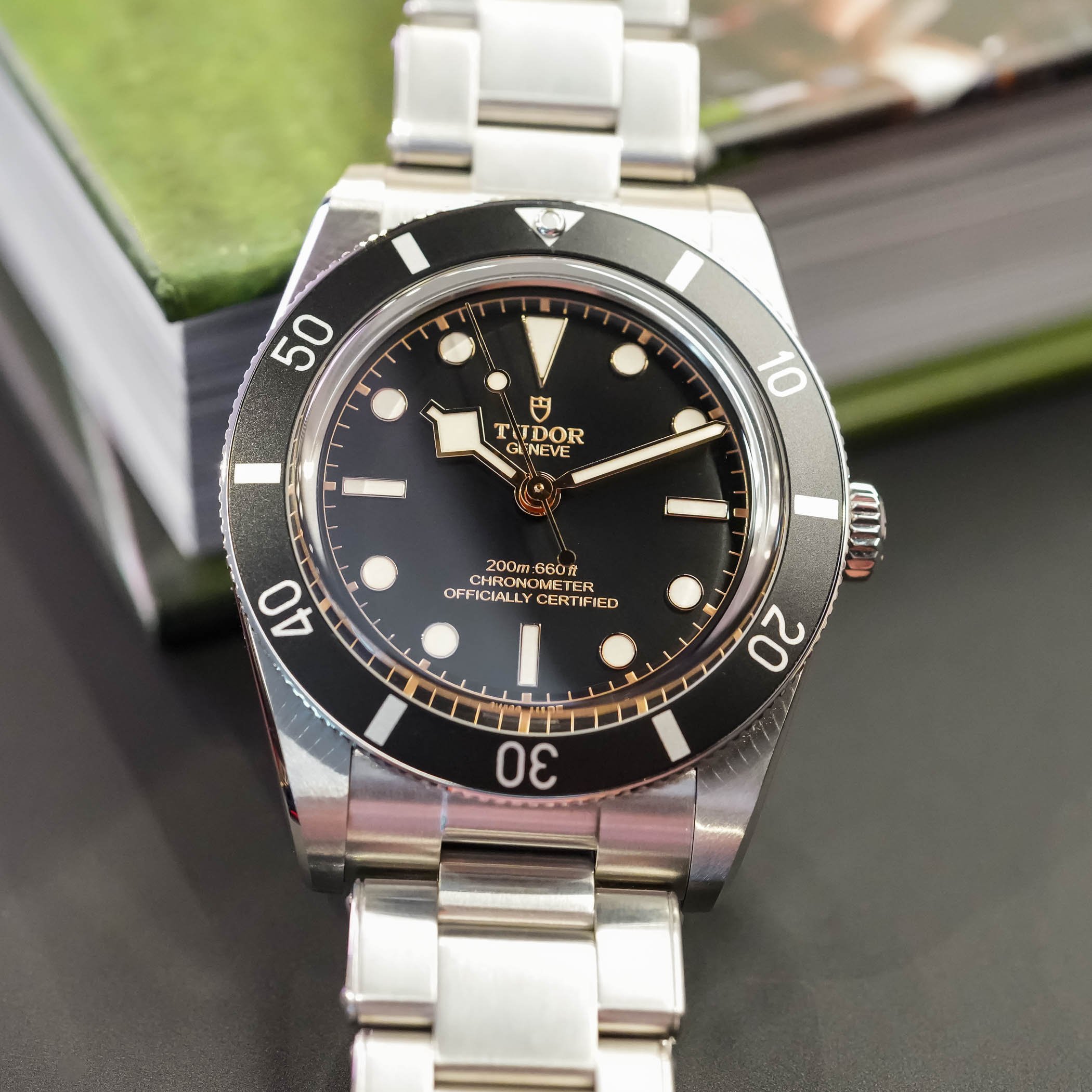
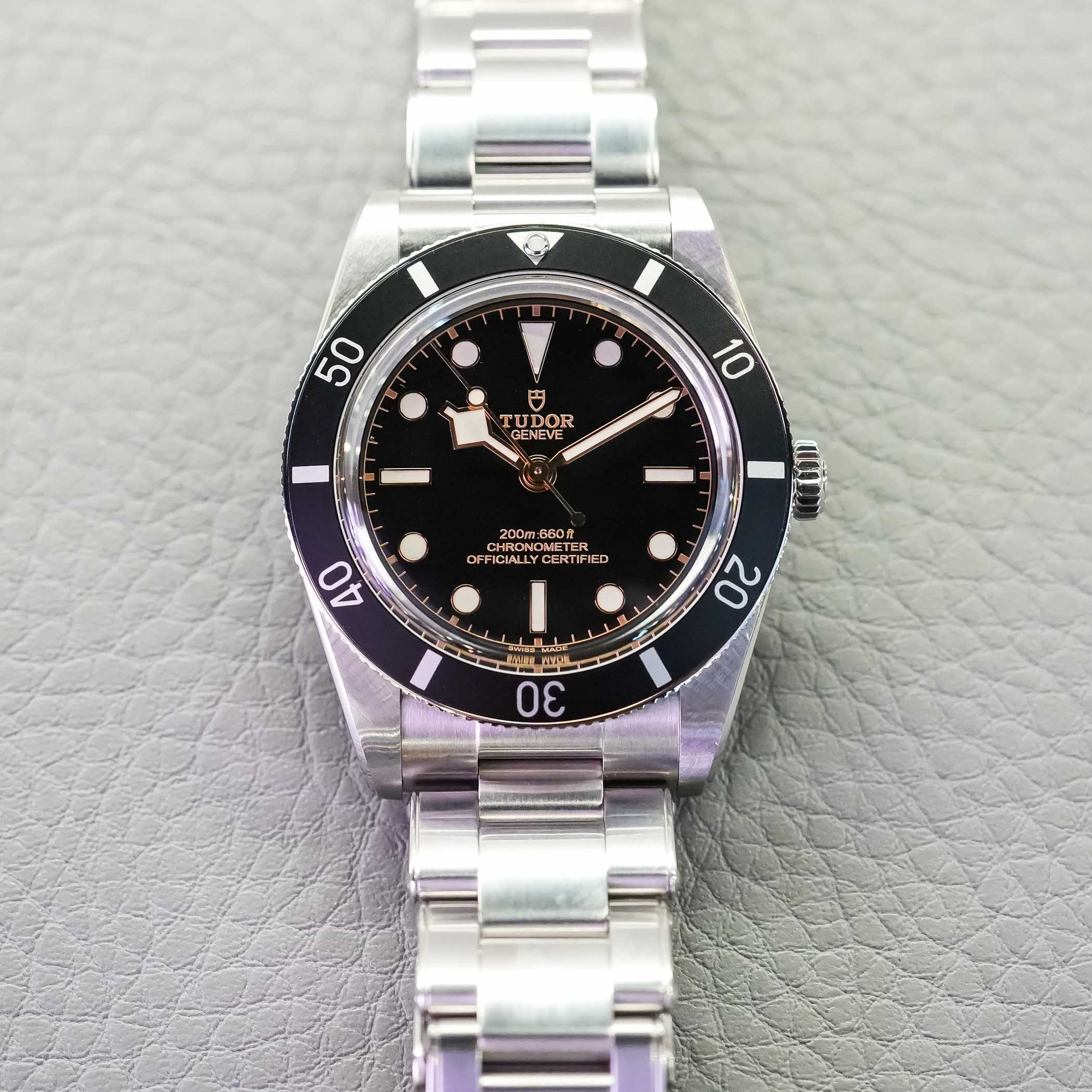
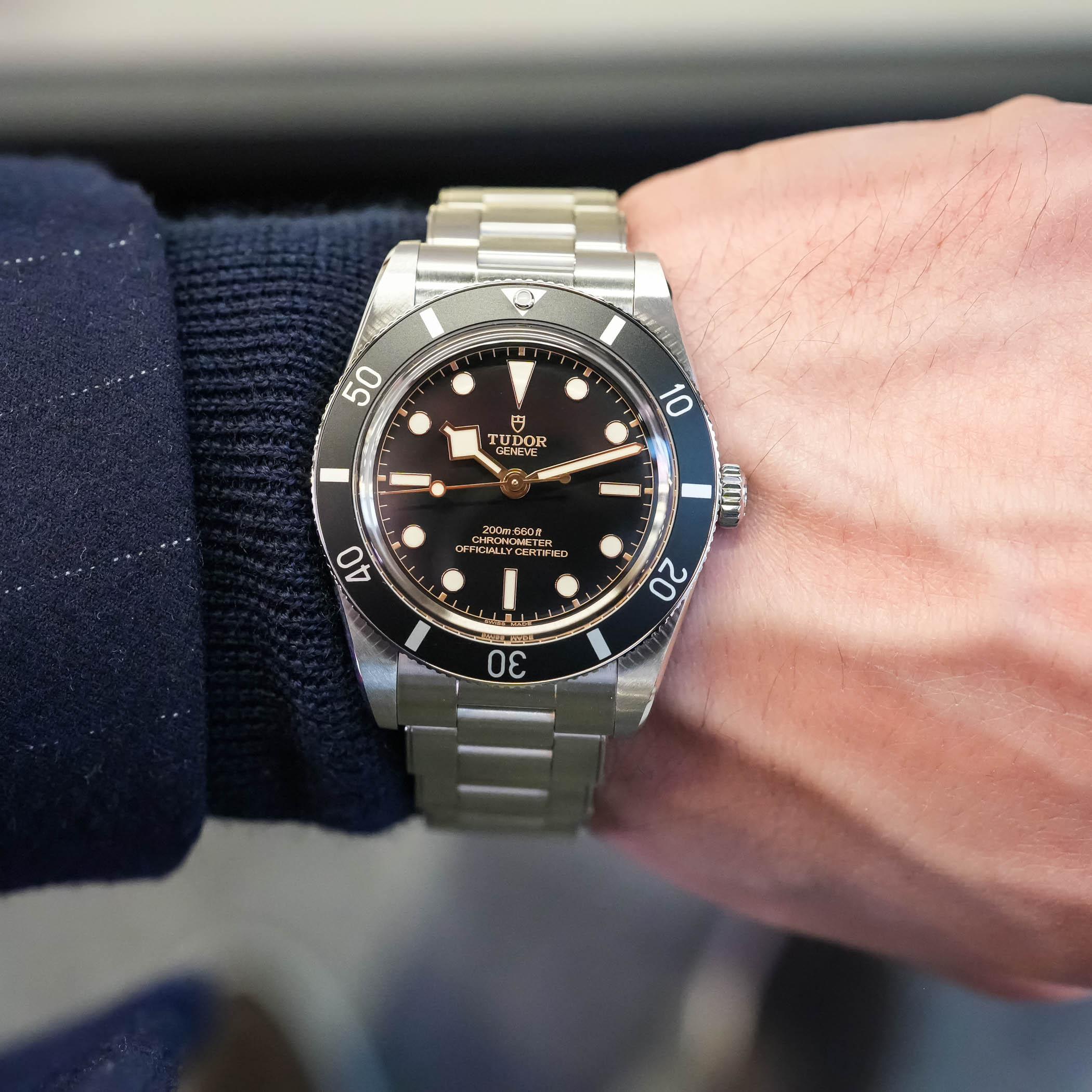
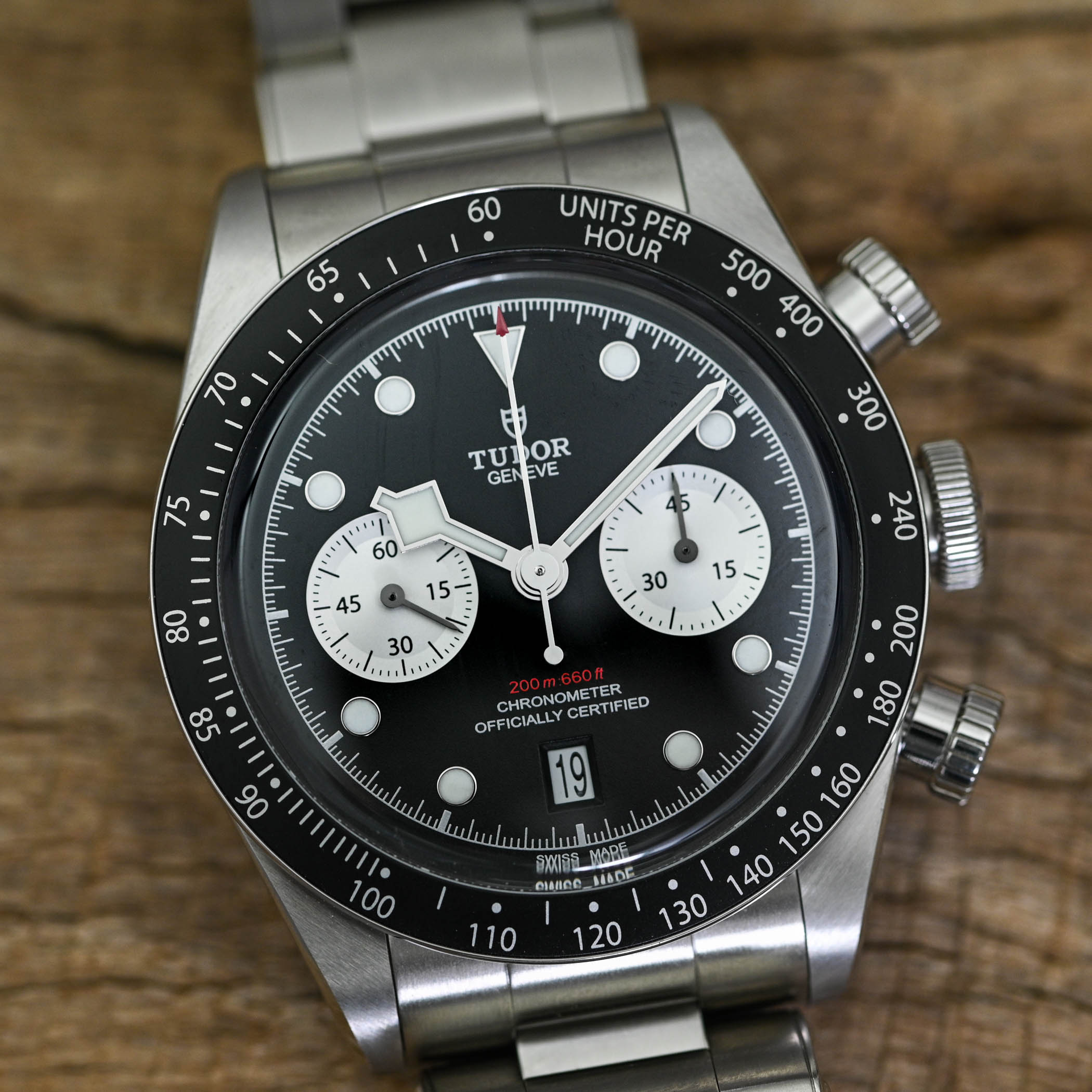
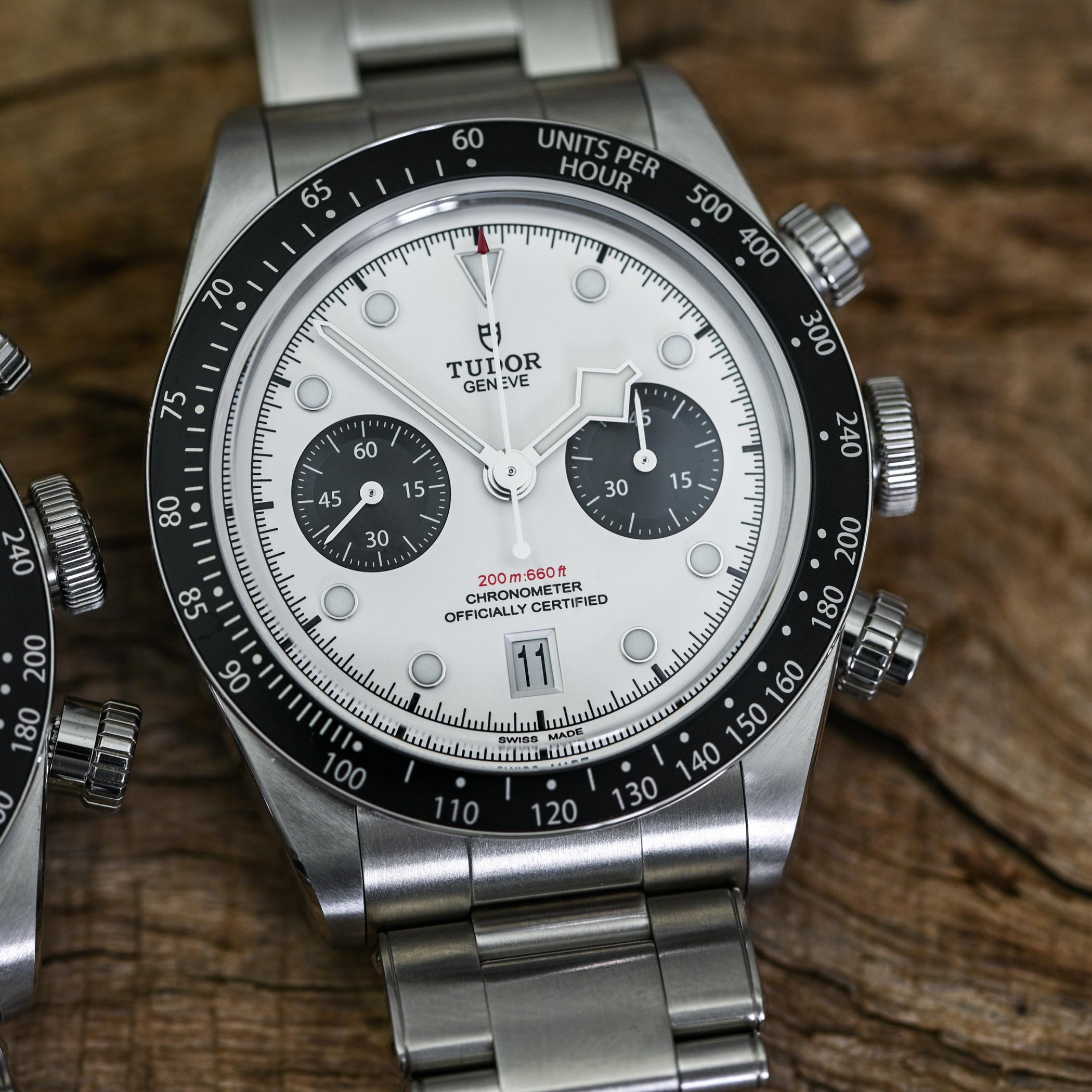
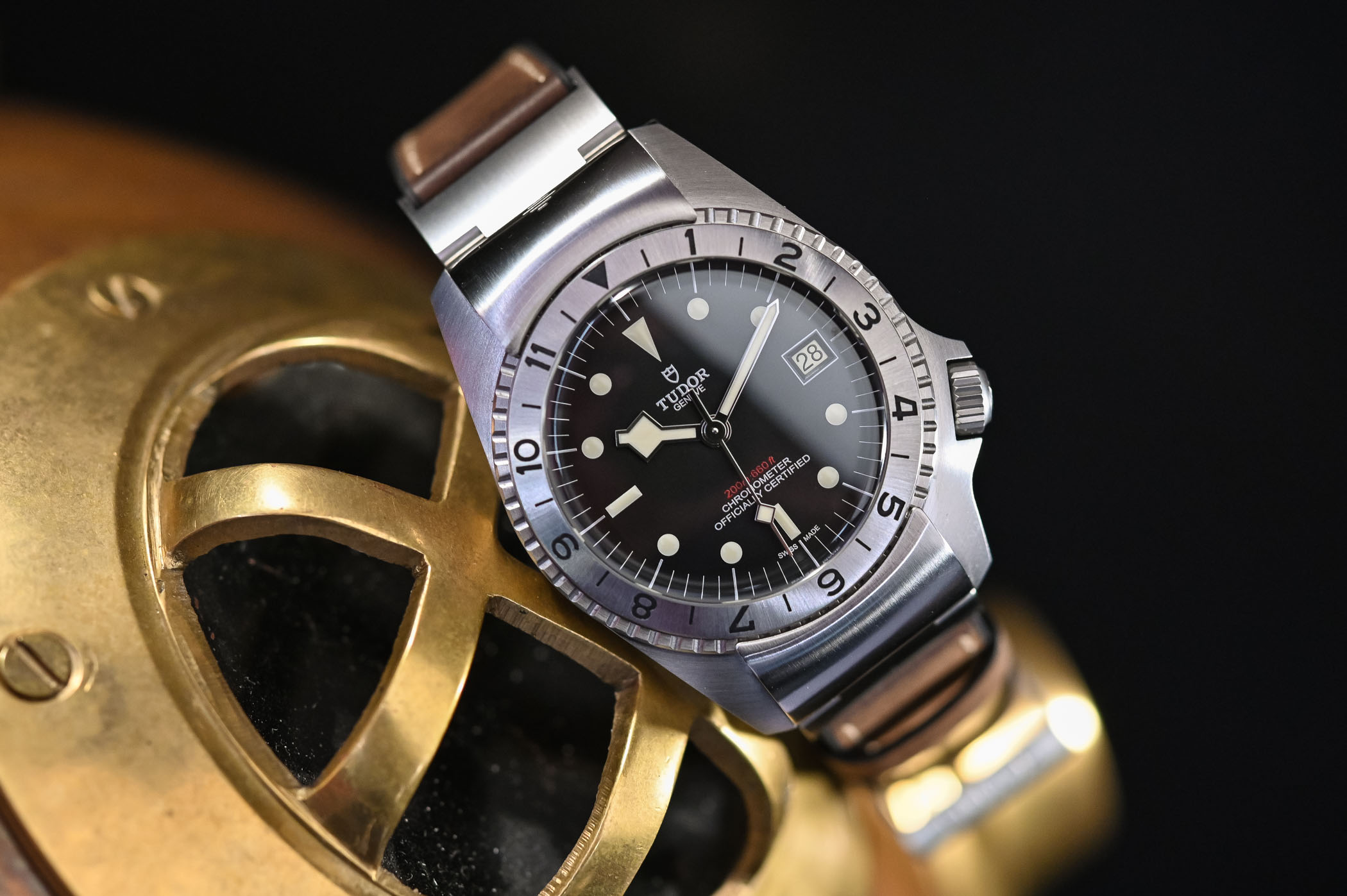
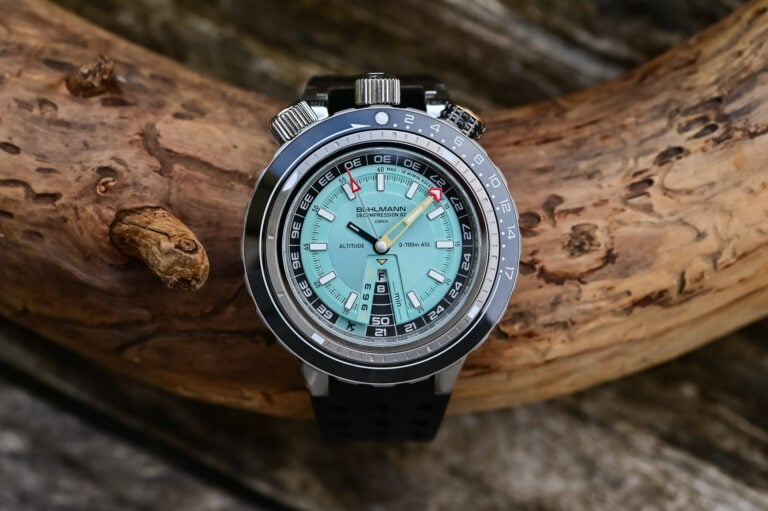
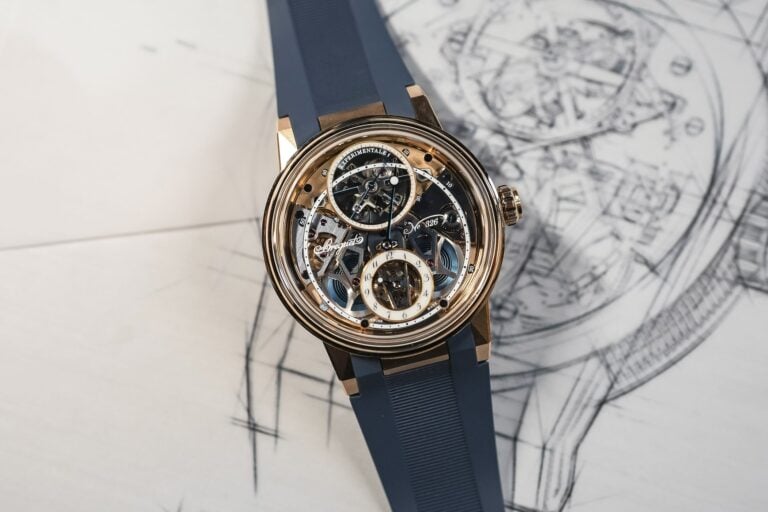
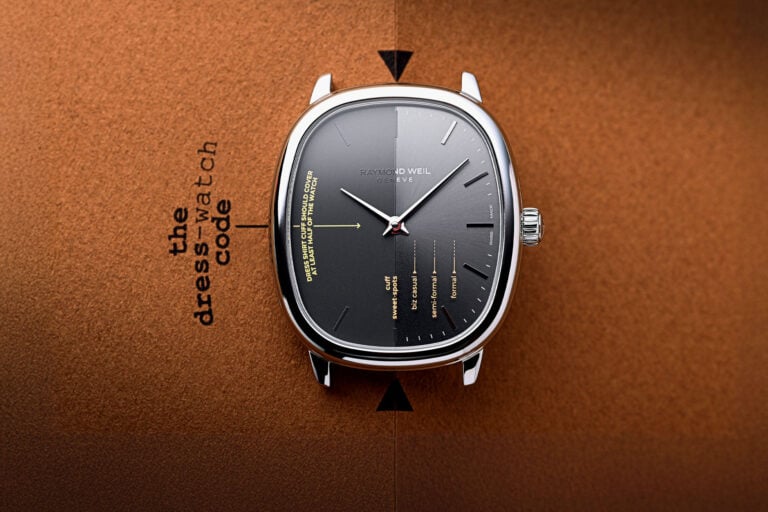
7 responses
They hit the high note in 2014 with the 79220B and it has been down hill ever sense
They may be a bit over hyped, but this is rightfully a modern classic.
There isn’t much not to like here.
Very nice article,shame you’re missing the Heritage Monte Carlo line,Advisor Alarm
In depth article on the black bay that helps me in what I’m thinking of purchasing. Undoubtably a modern classic, if not a safe option, that looks great on bracelet, leather or NATO
@John Fernandez – Those references you mention are not part of the BLack Bay collection, which was the centre piece of this article. Hence why they are not listed (but you can find articles about them on the website)
@Dave I’ve got to say, the latest Black Bay 54 on bracelet is my personal favorite
Mine has been a poor timekeeper since purchased in 2020. No help from the service dept whatsoever. One of their dealers has now assessed it and found it was in fact faulty, as I said weeks after purchasing it. Would ot recommend.